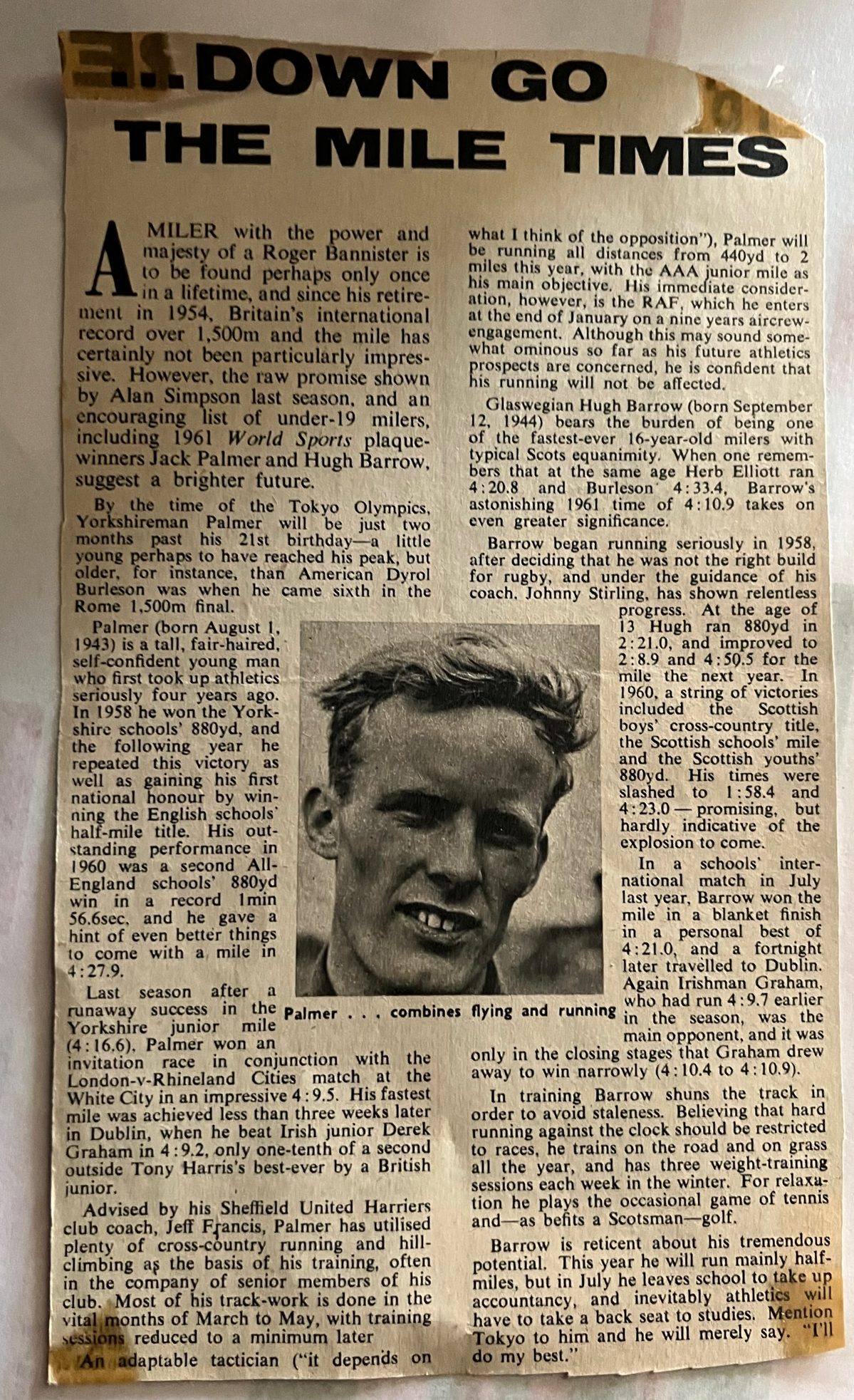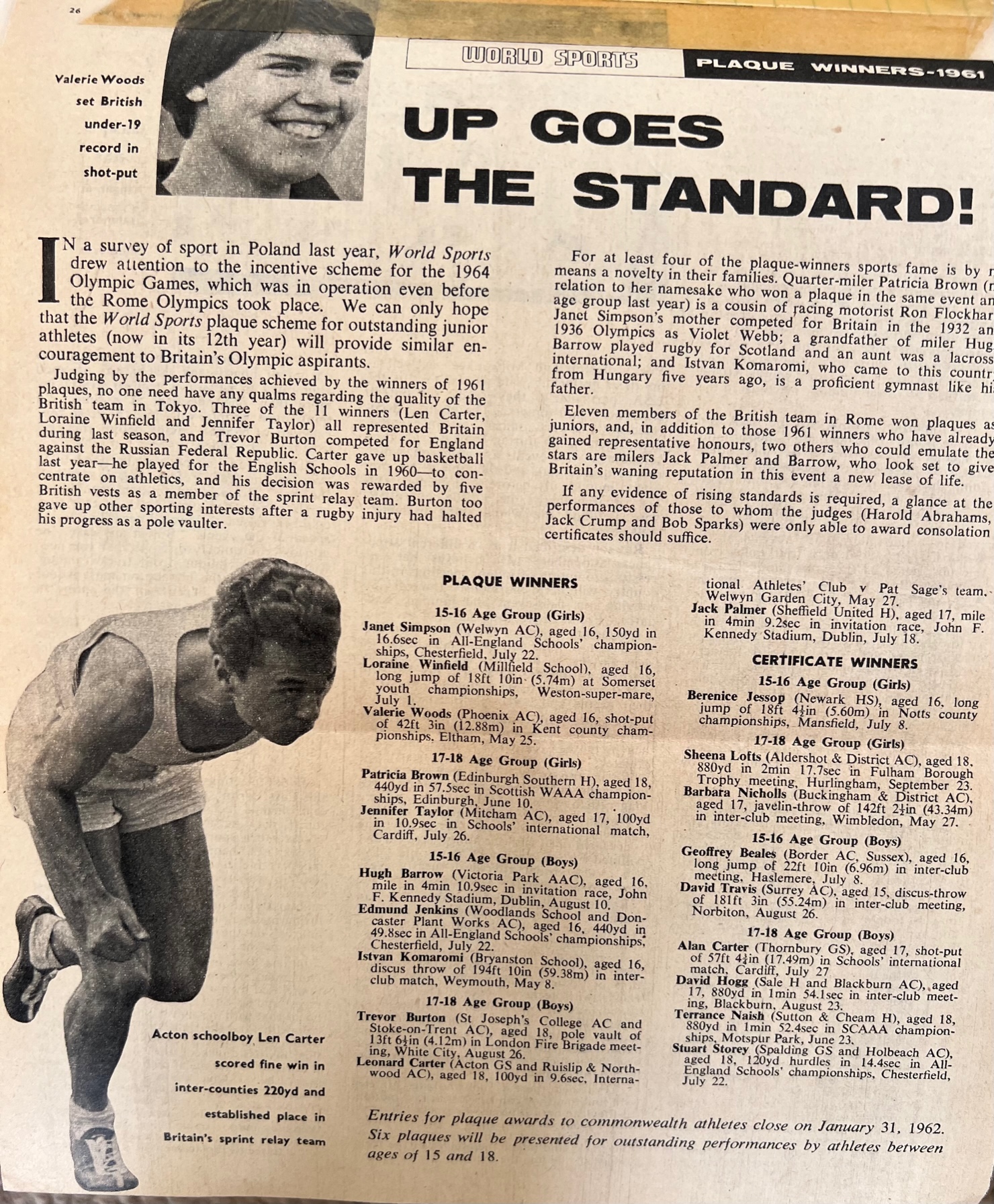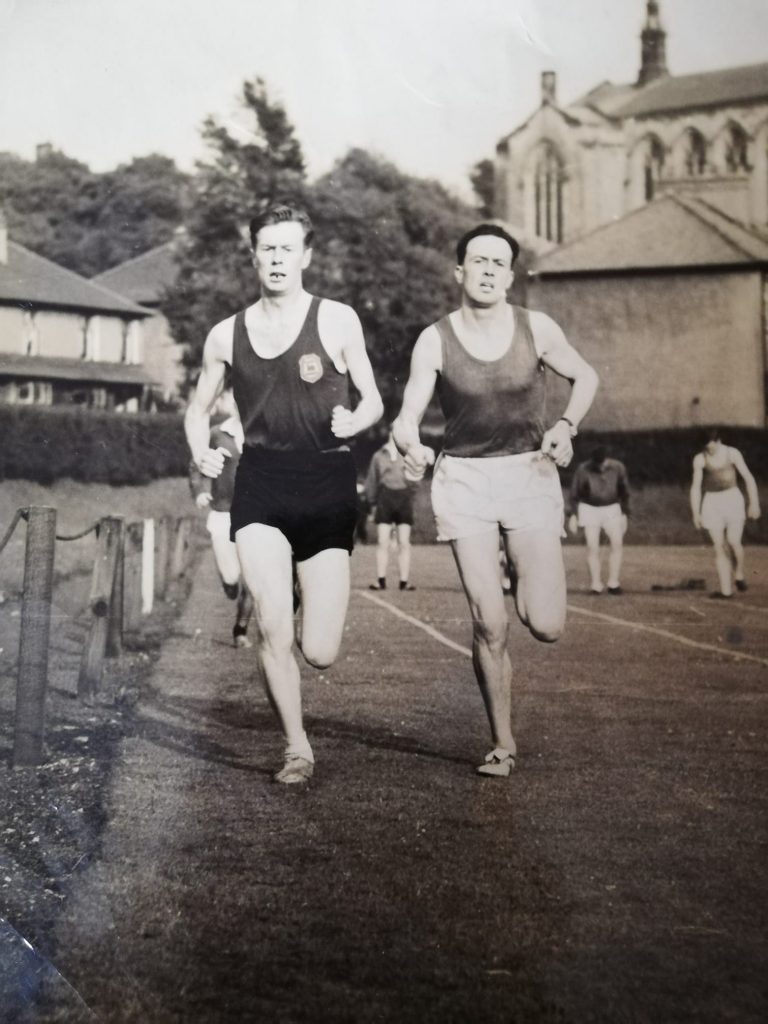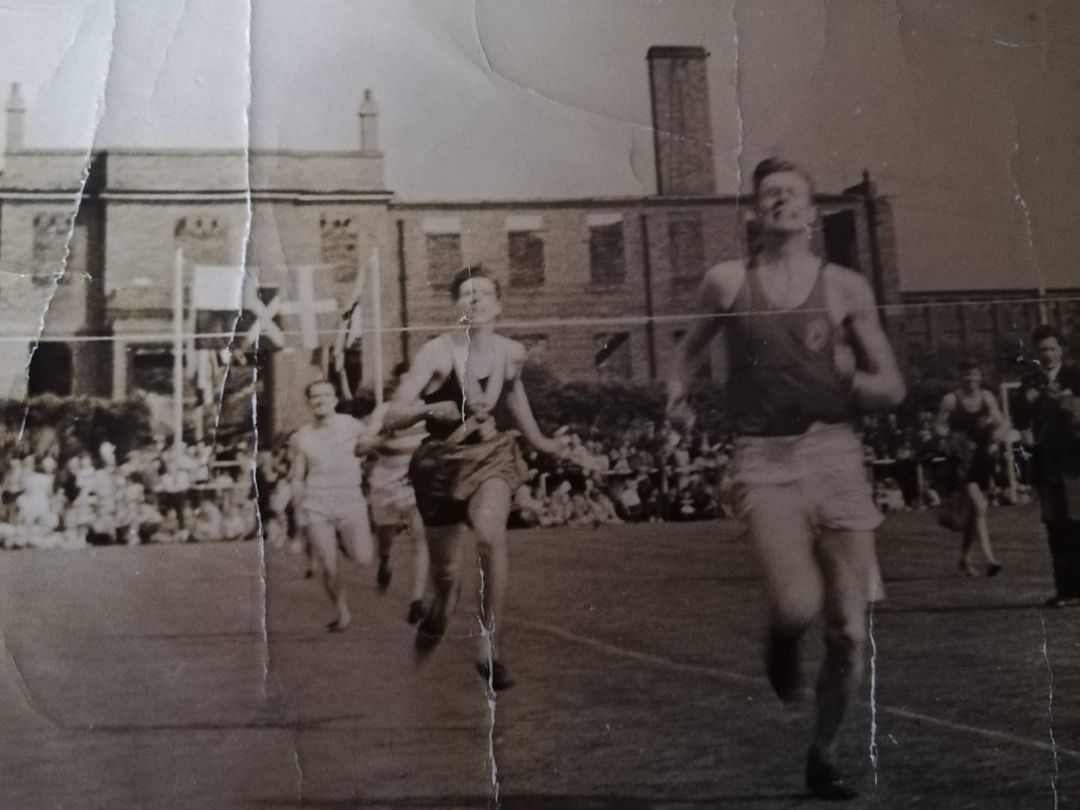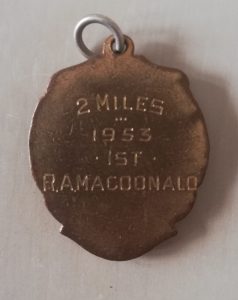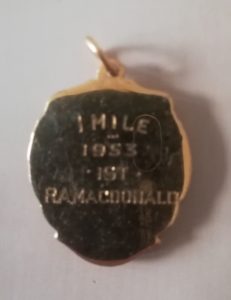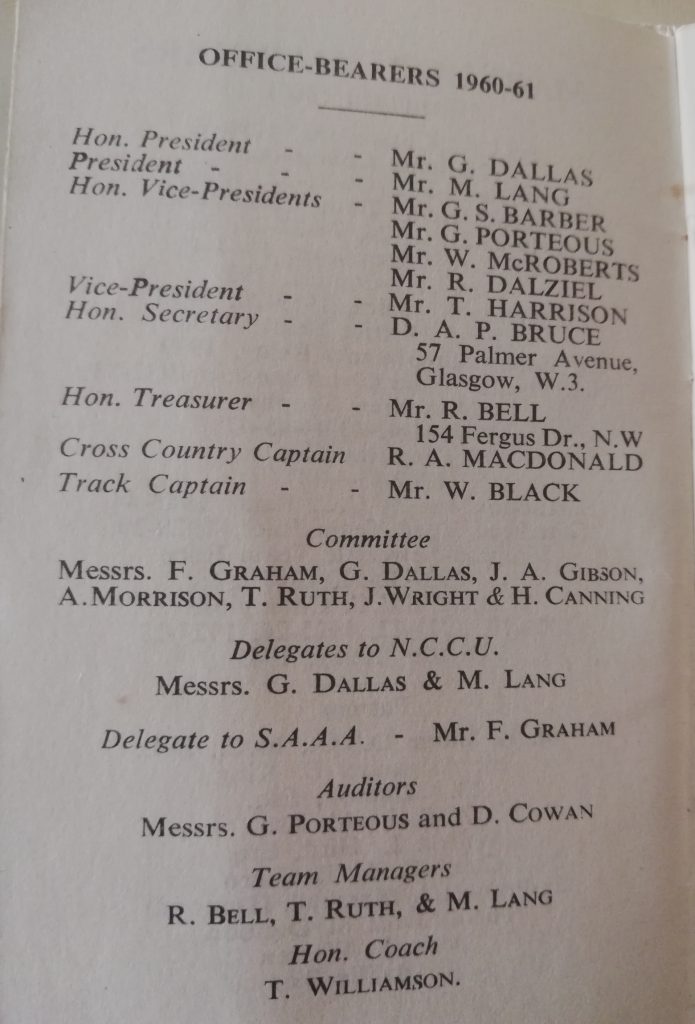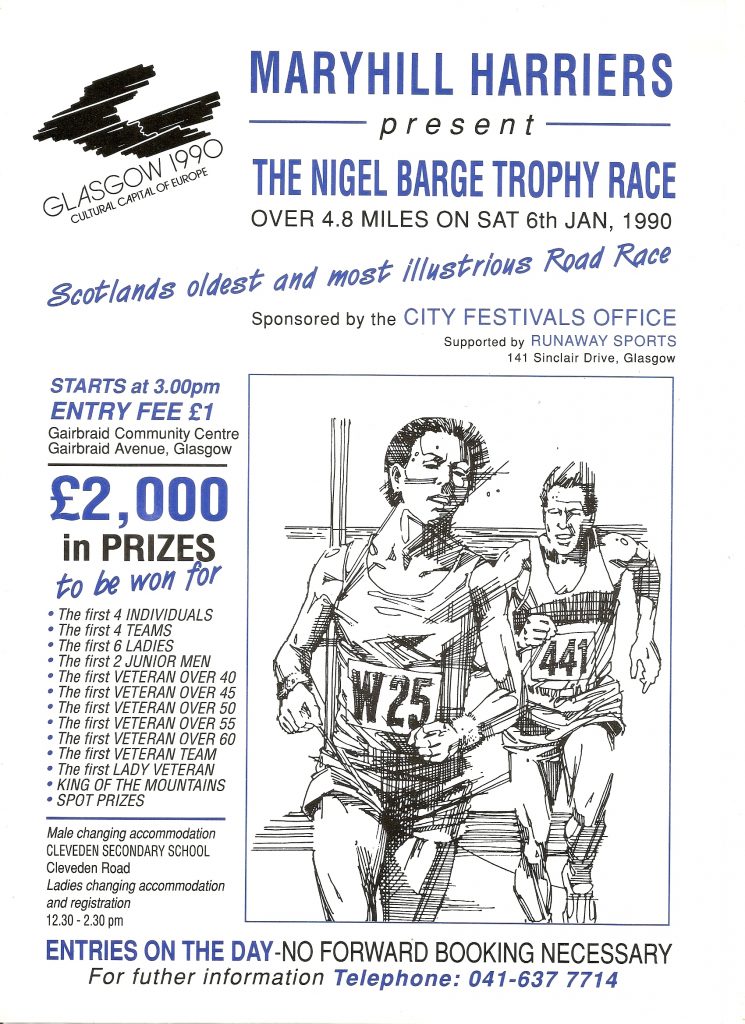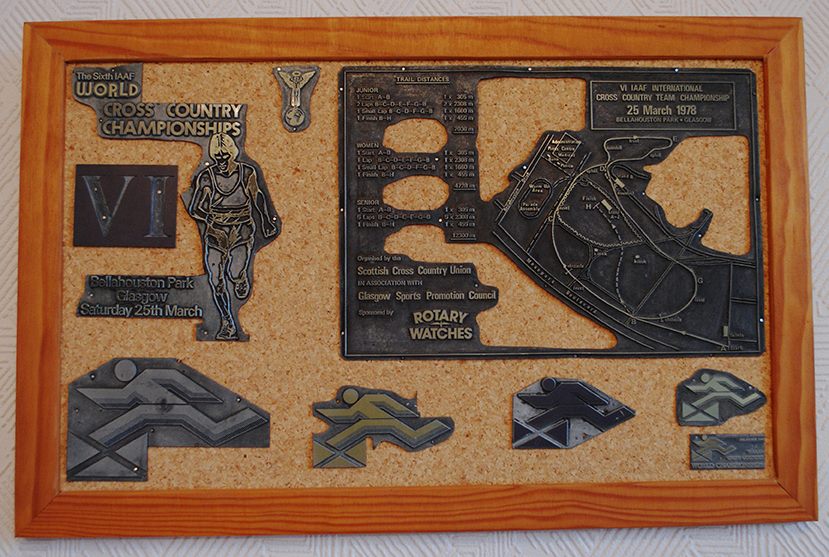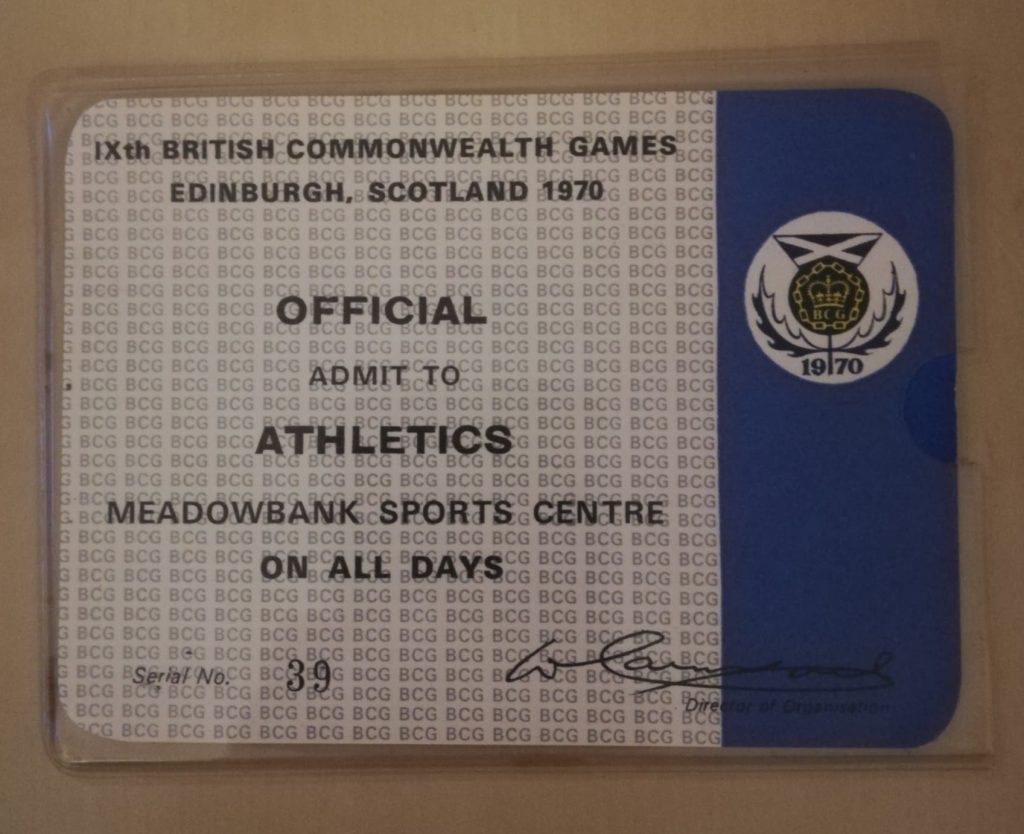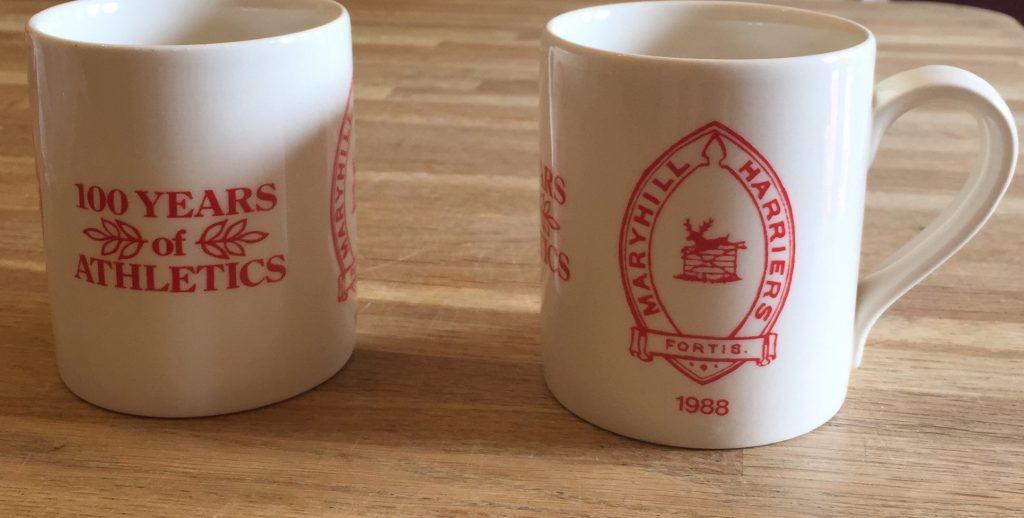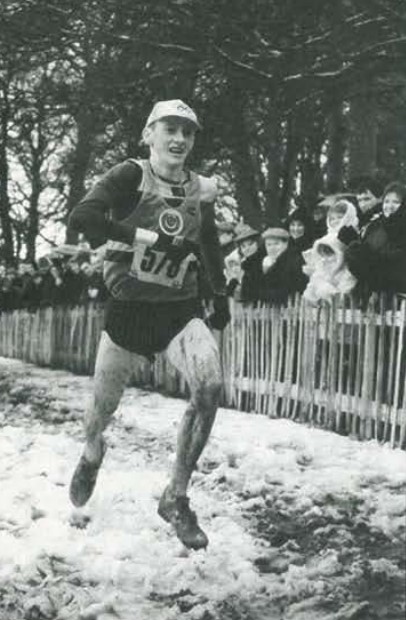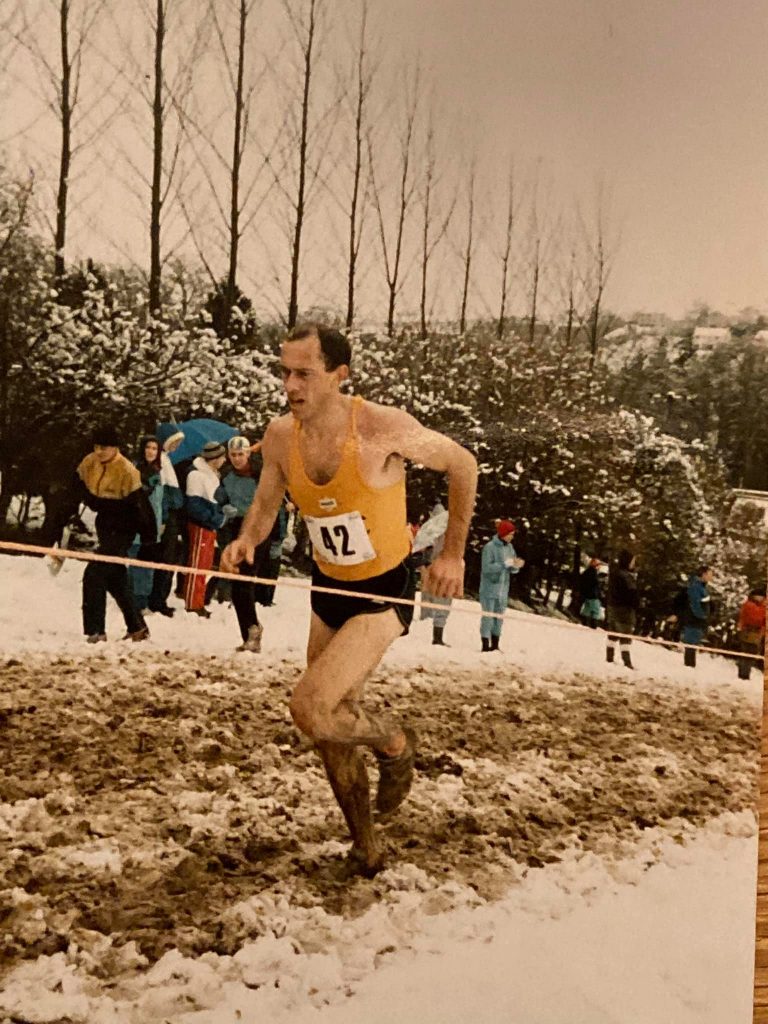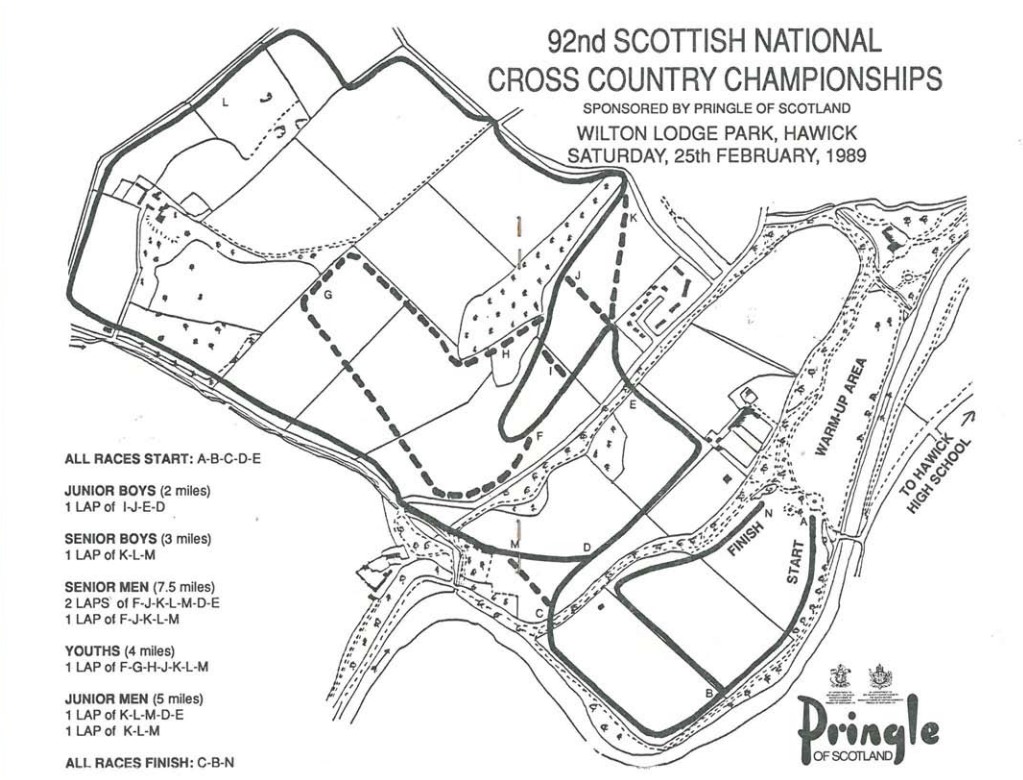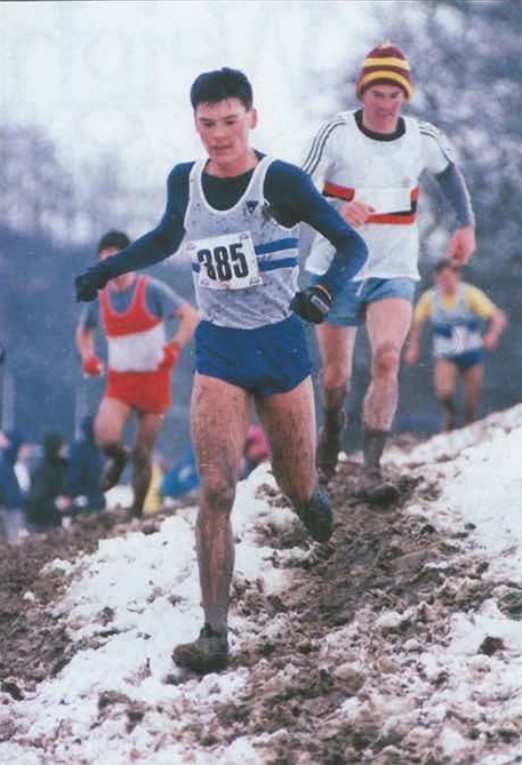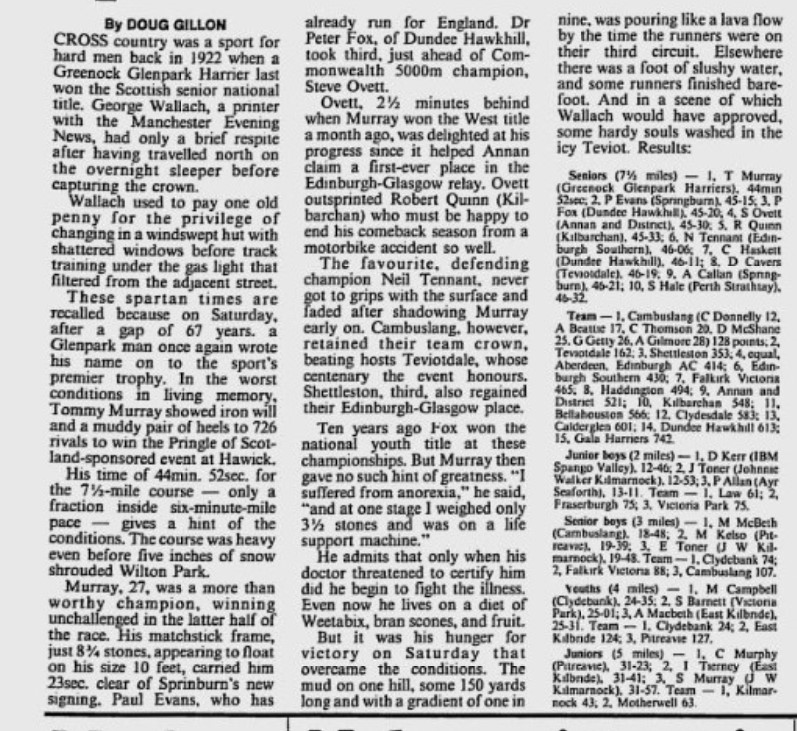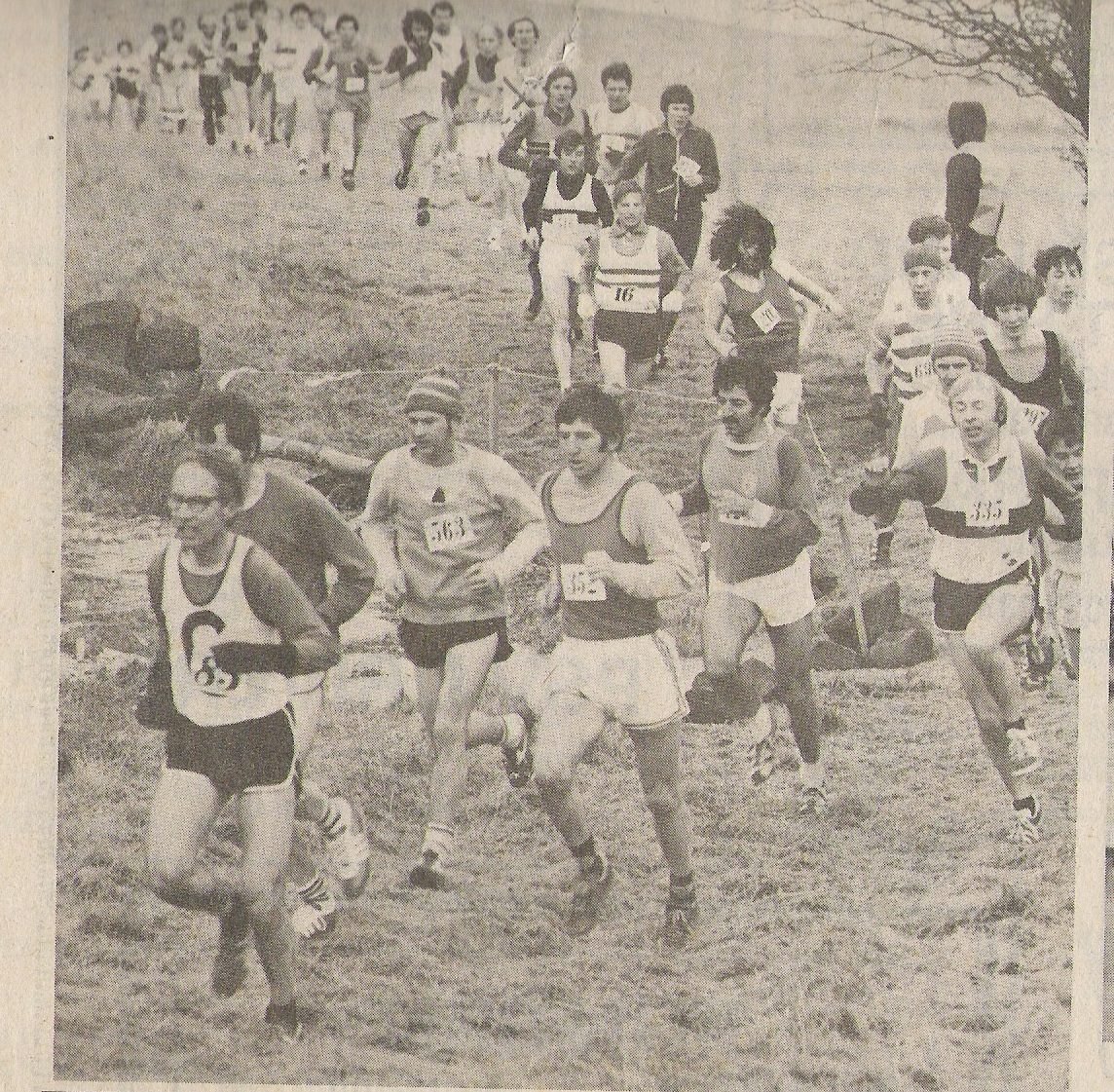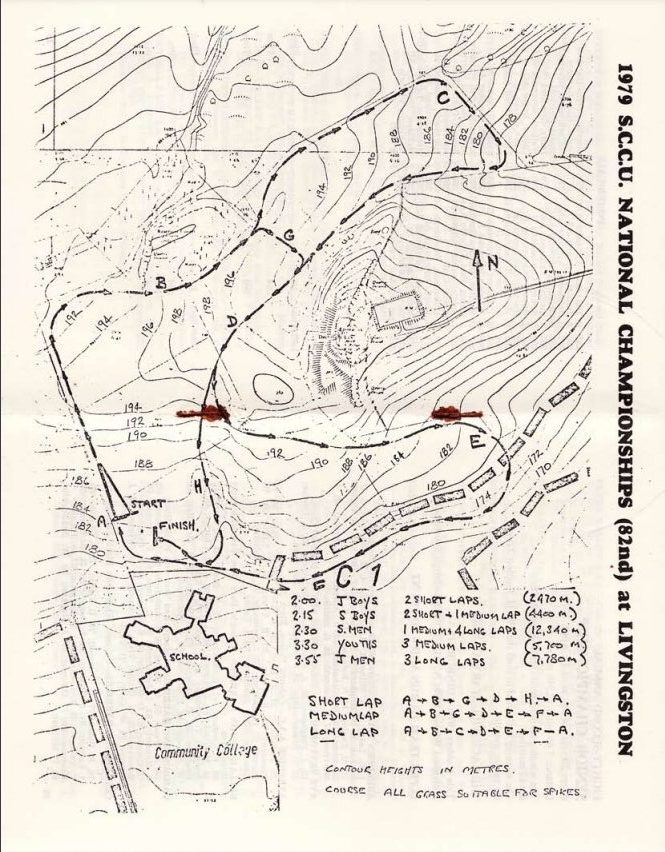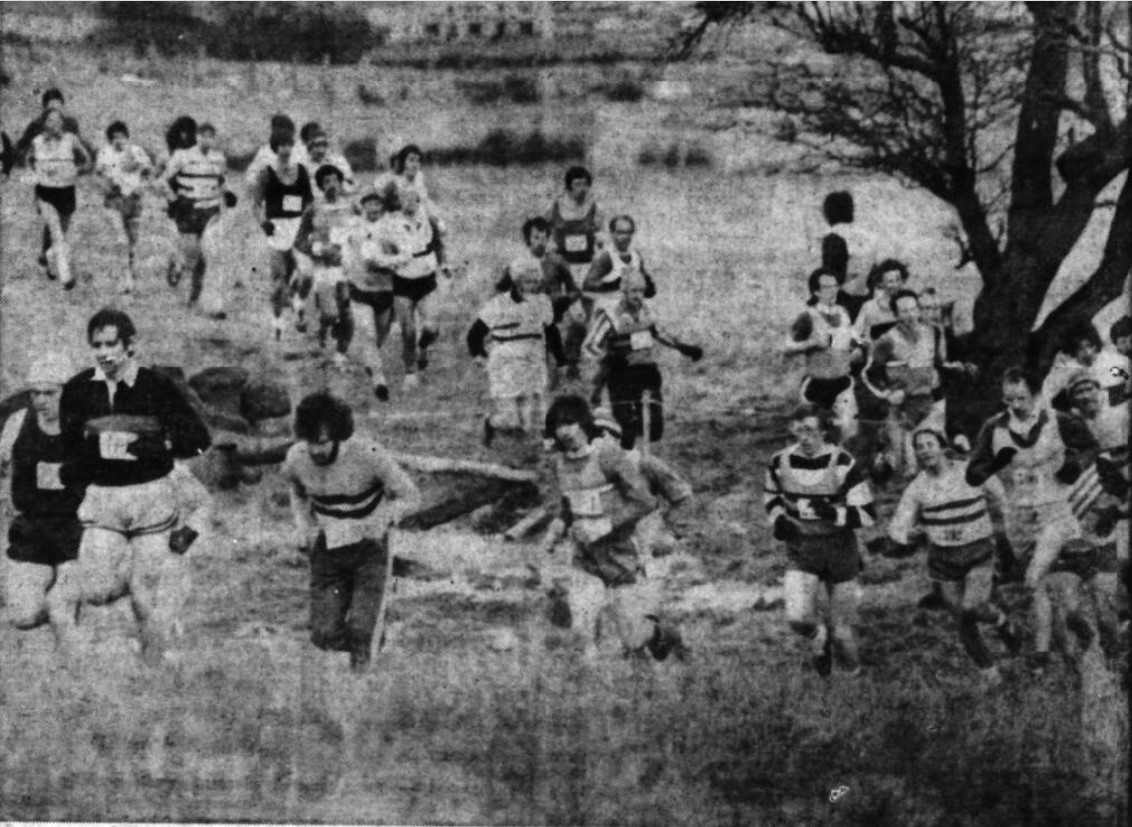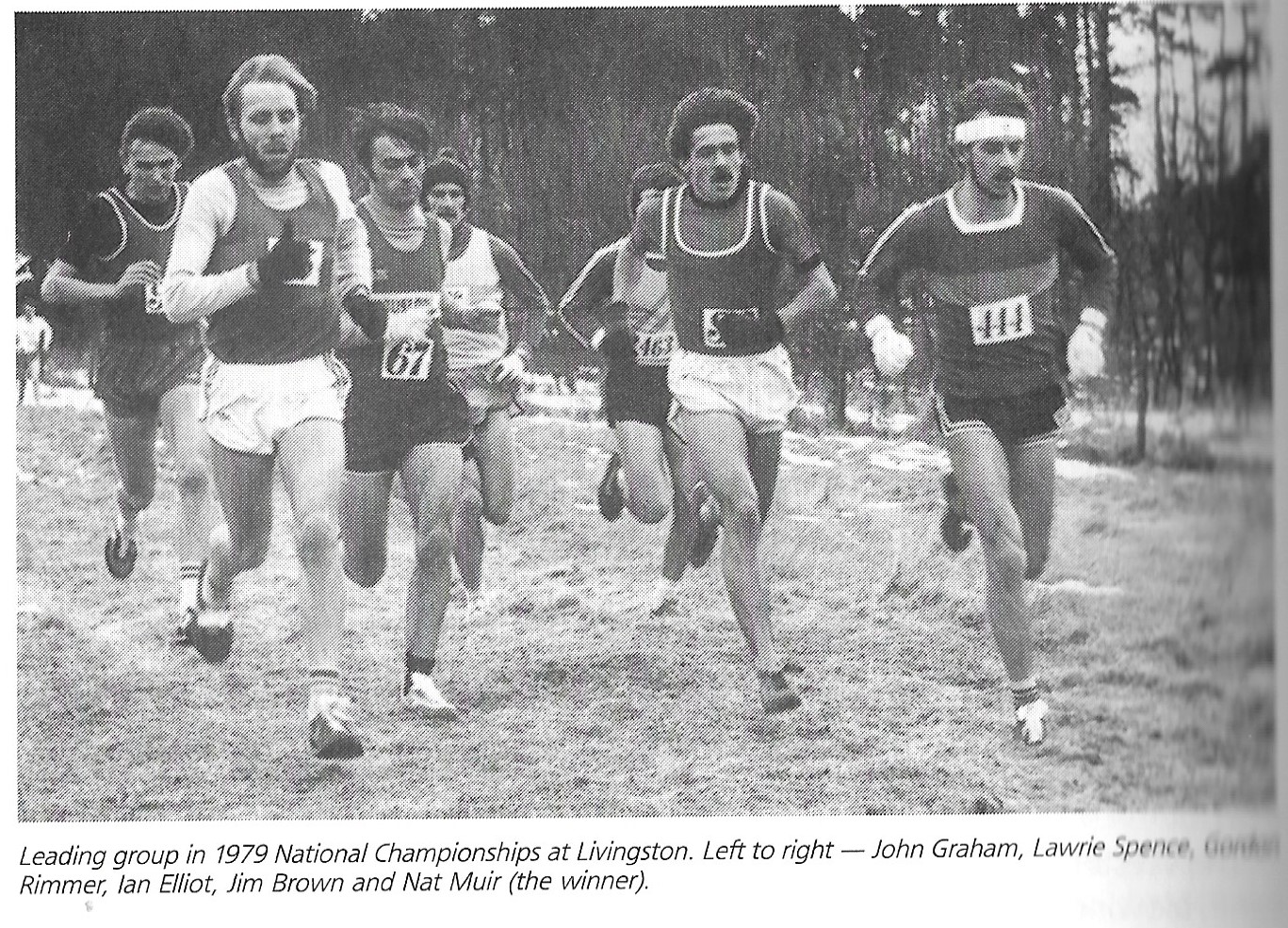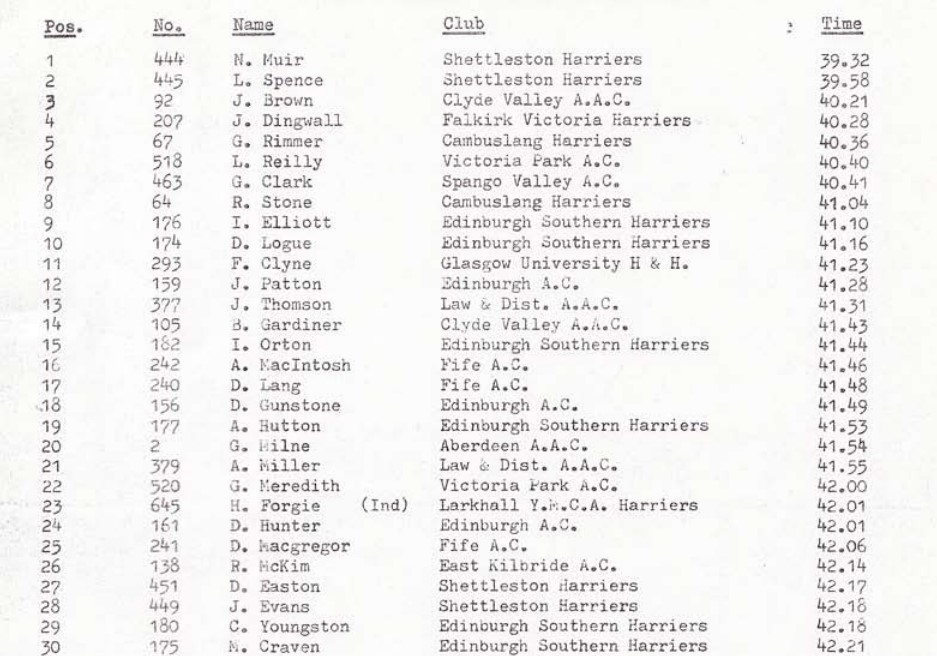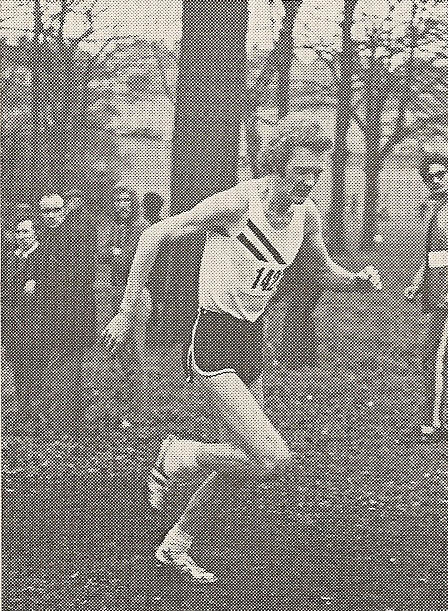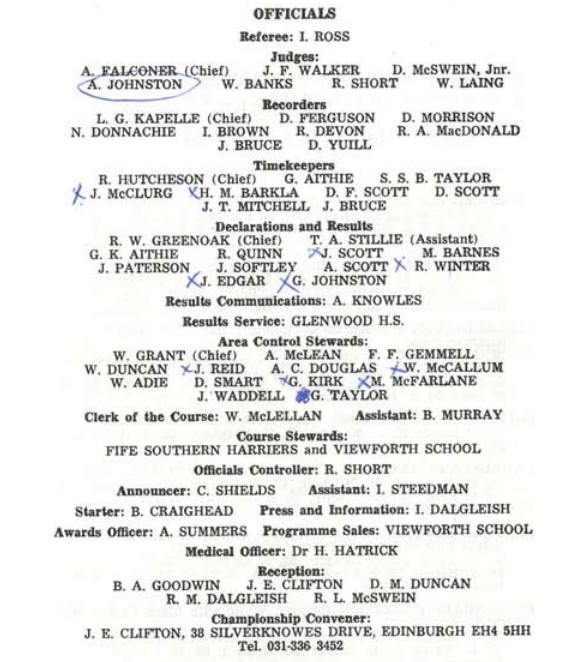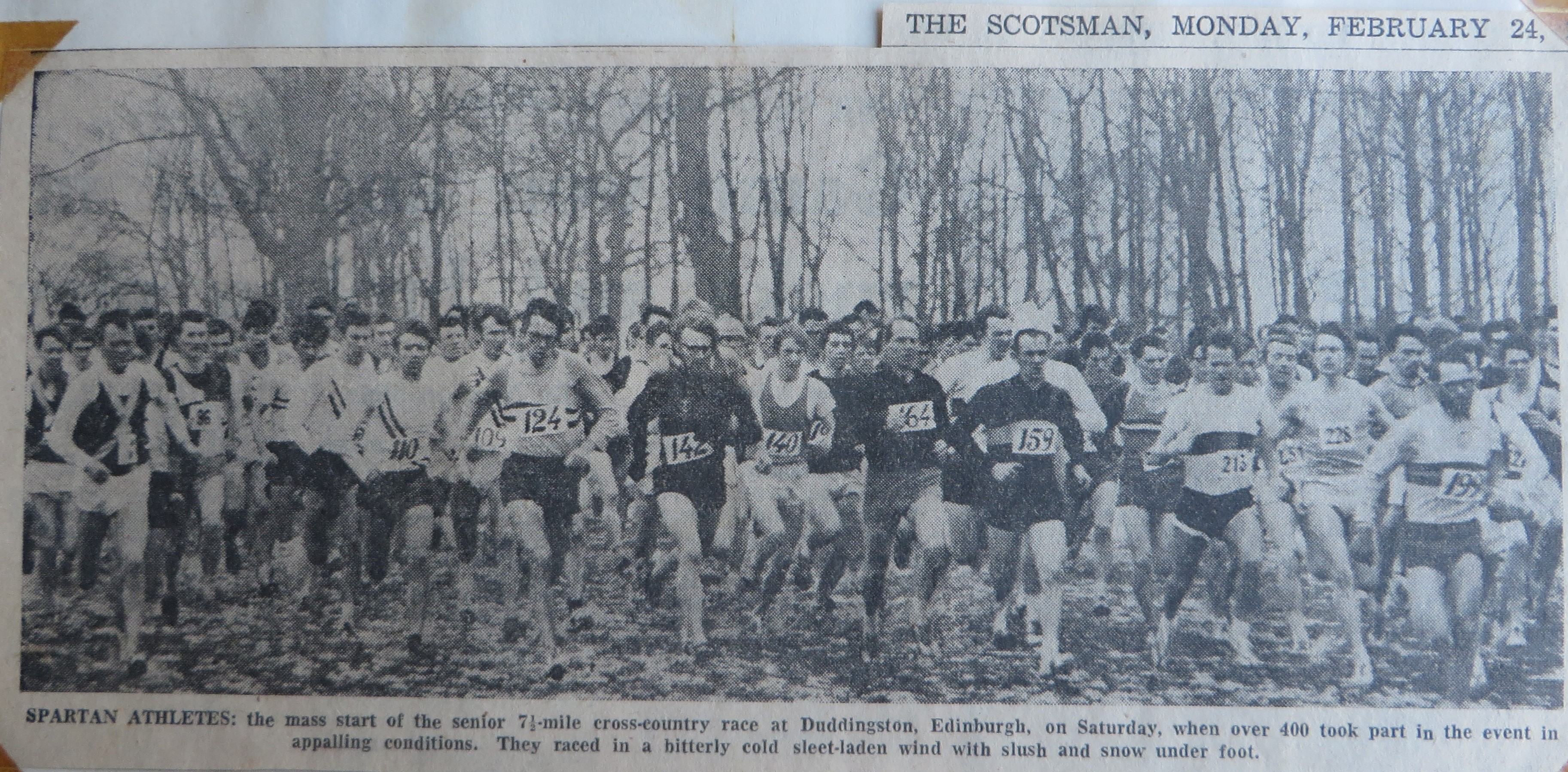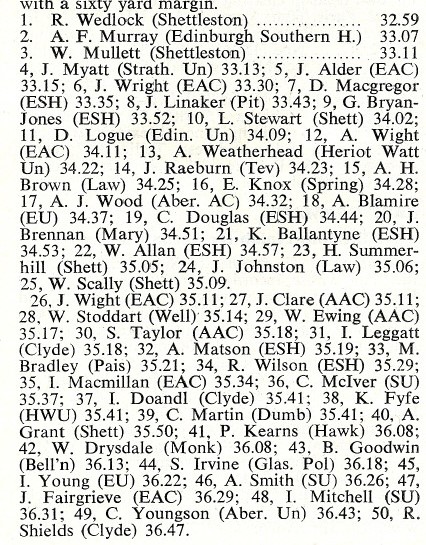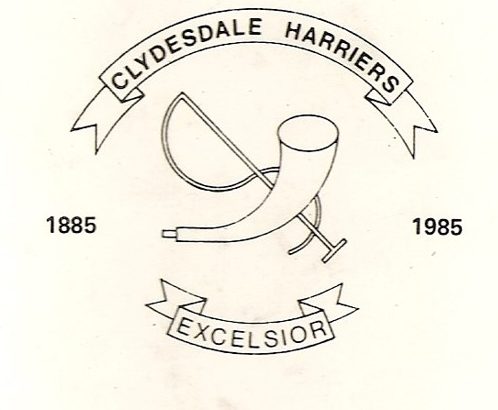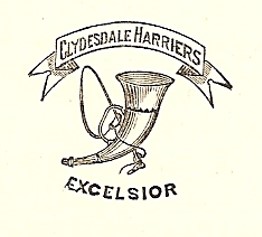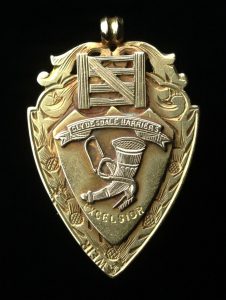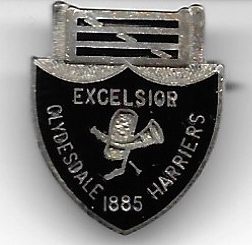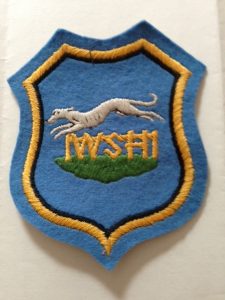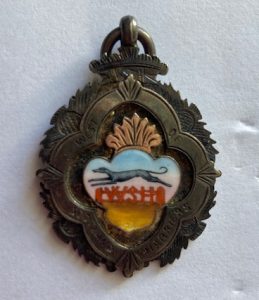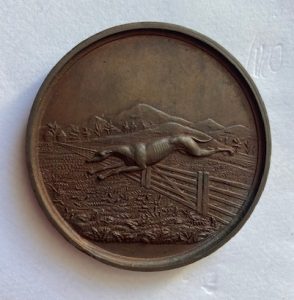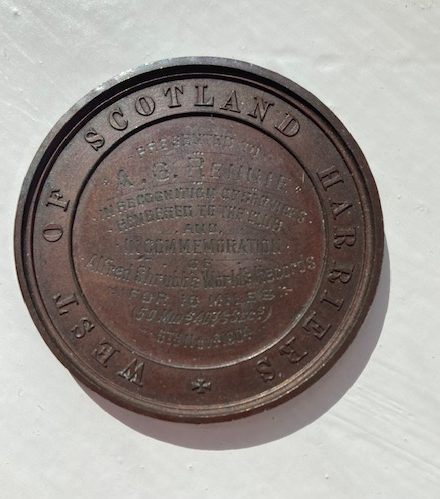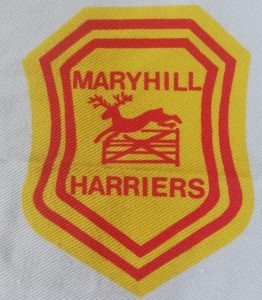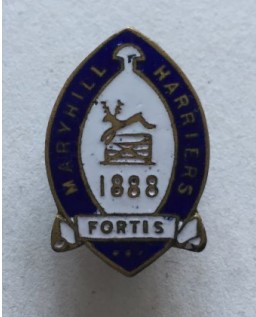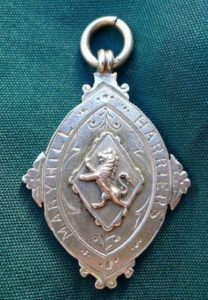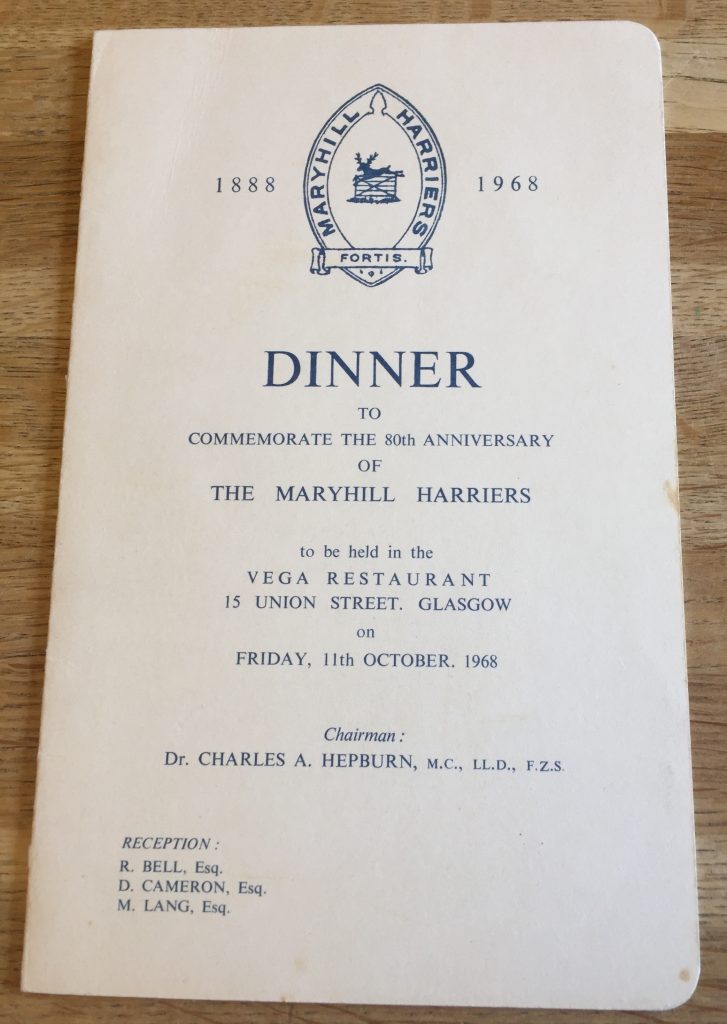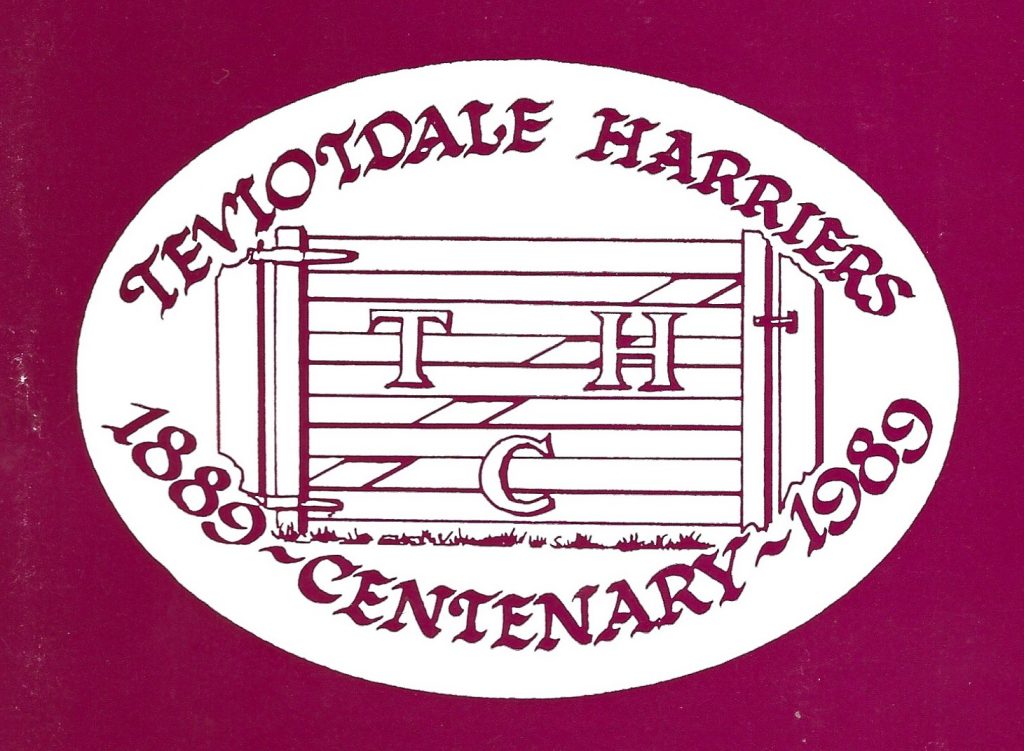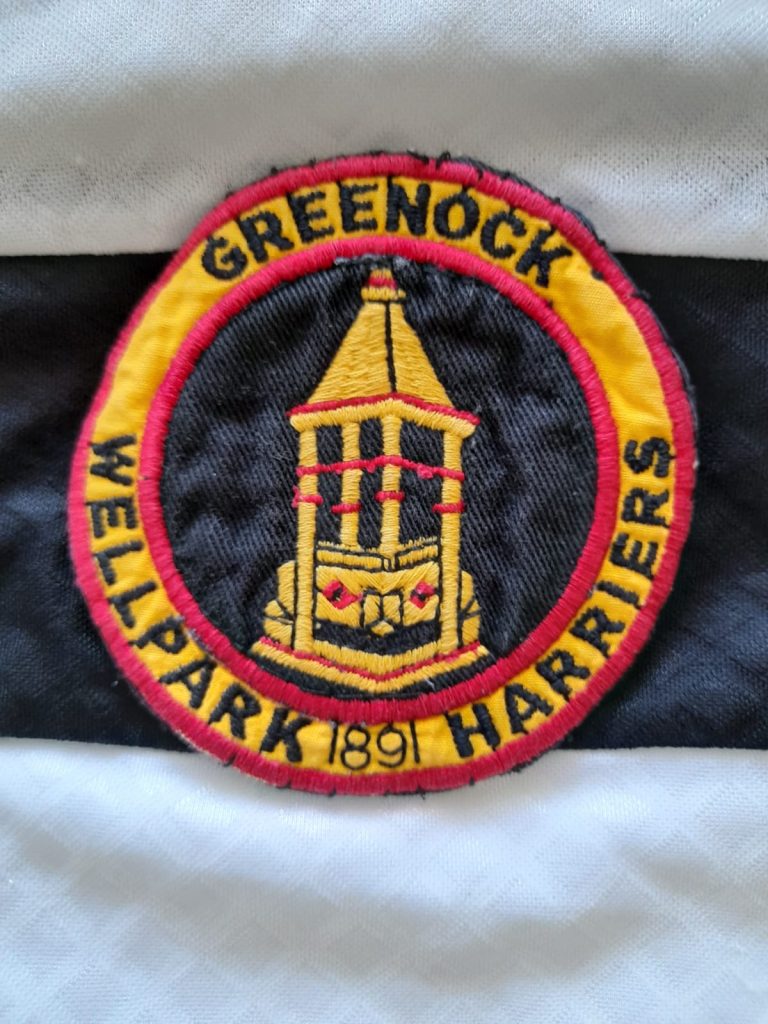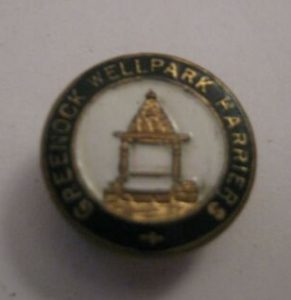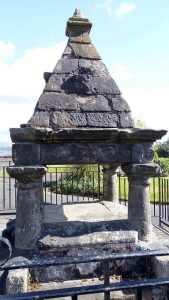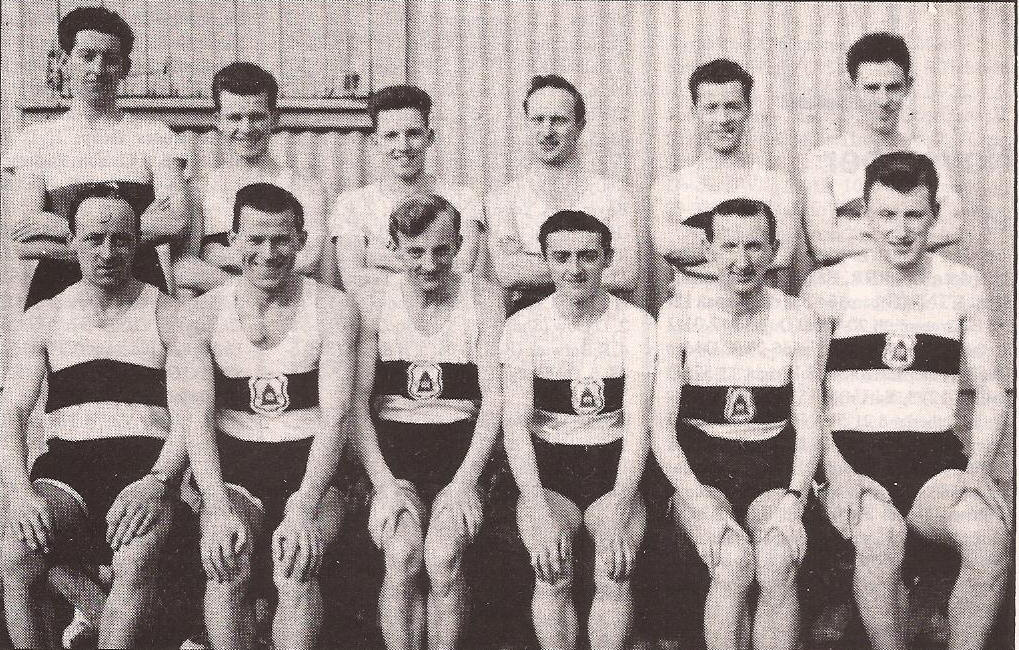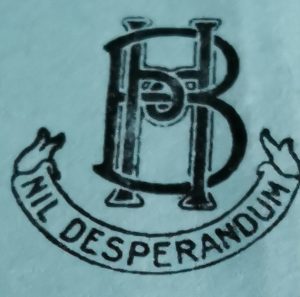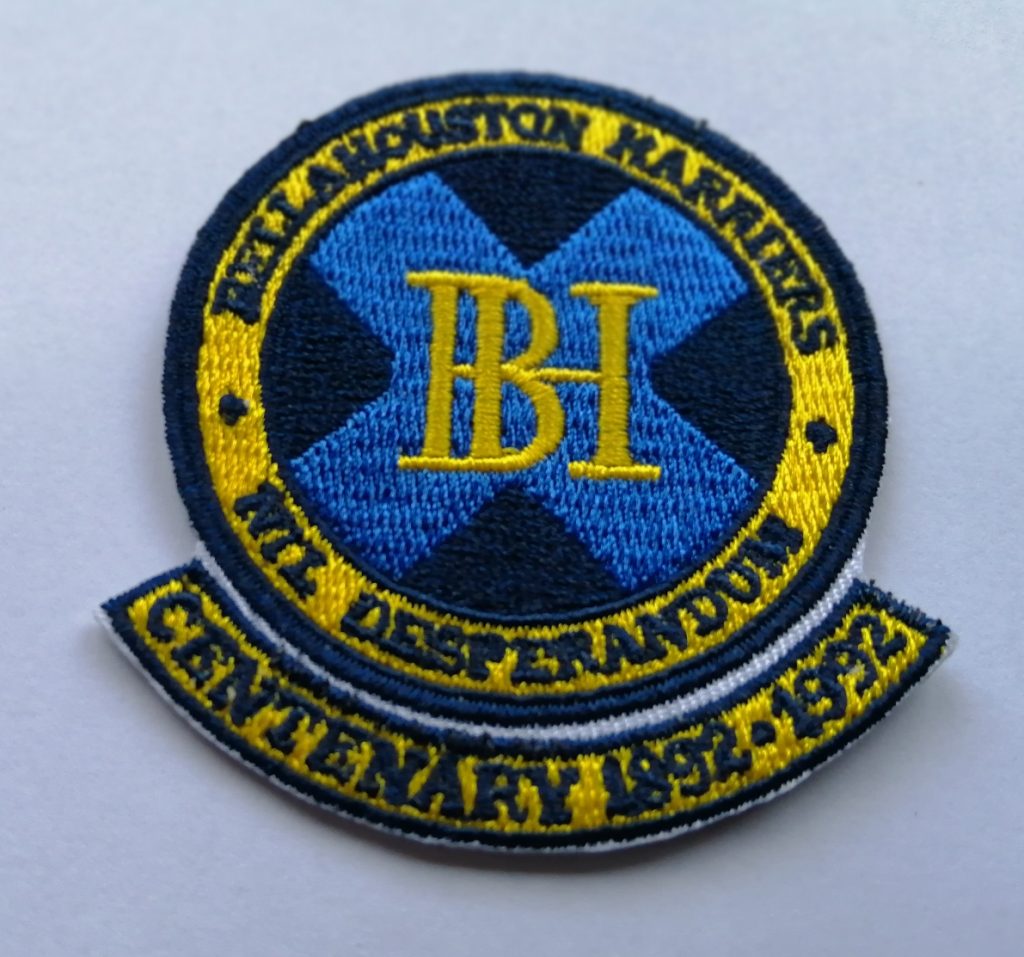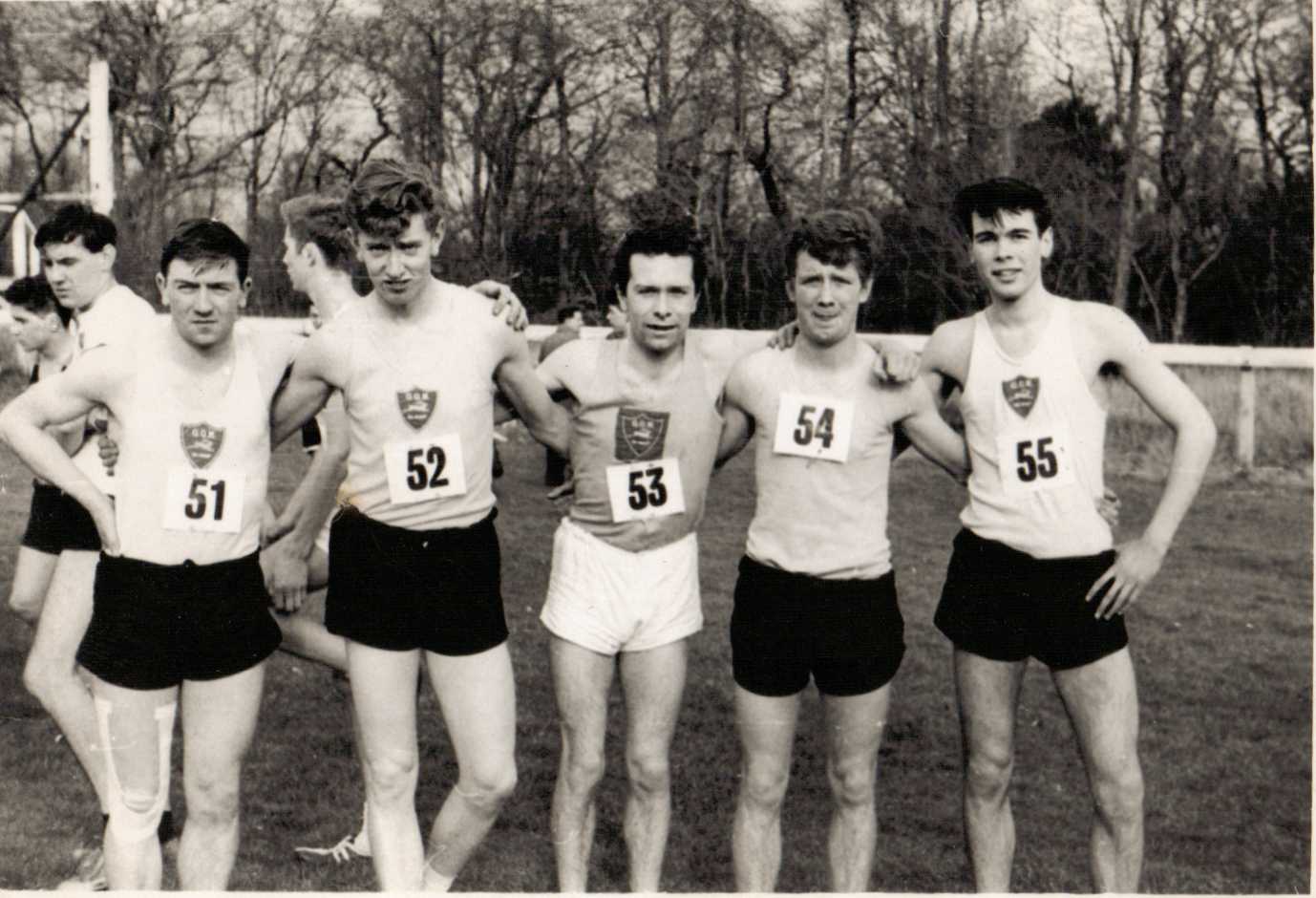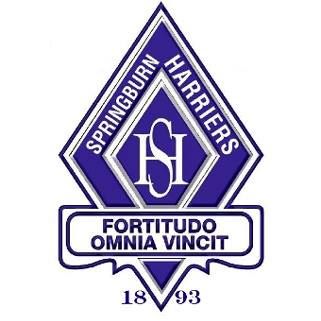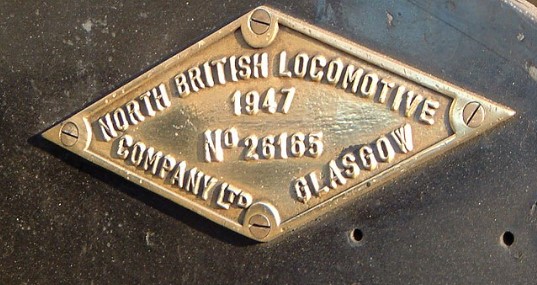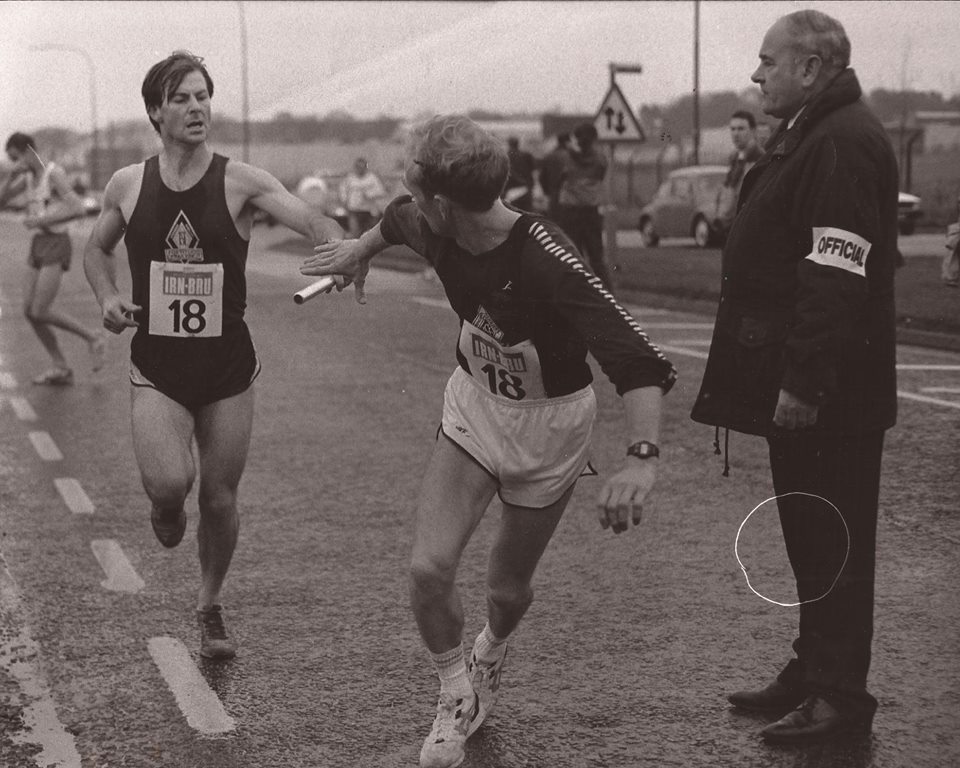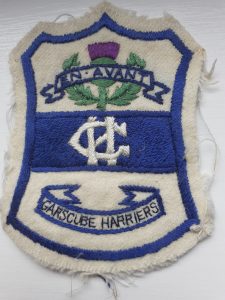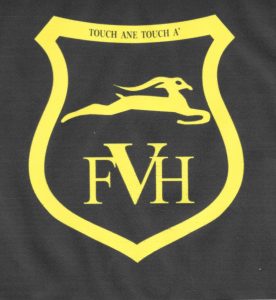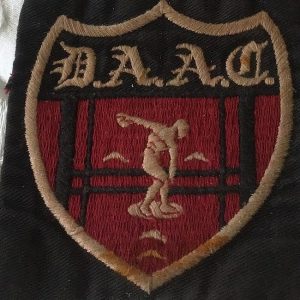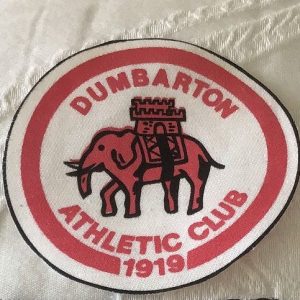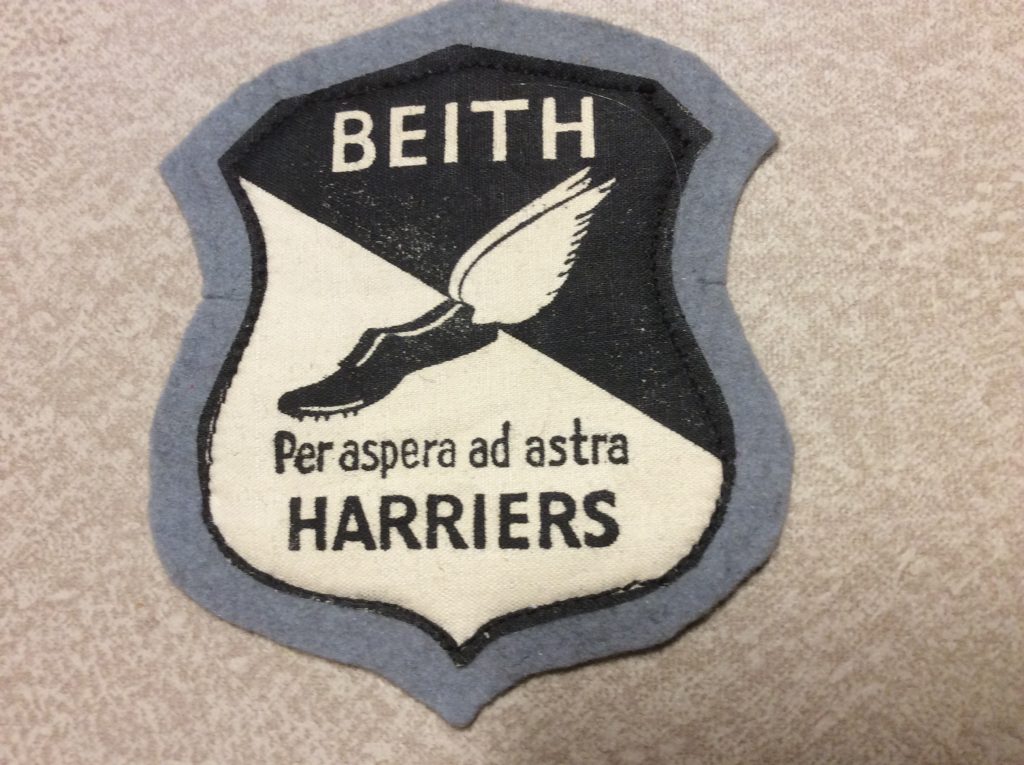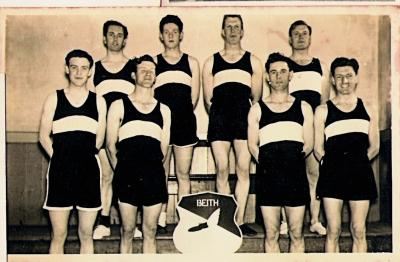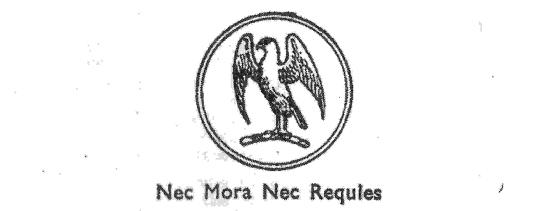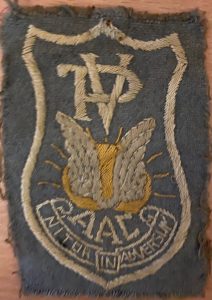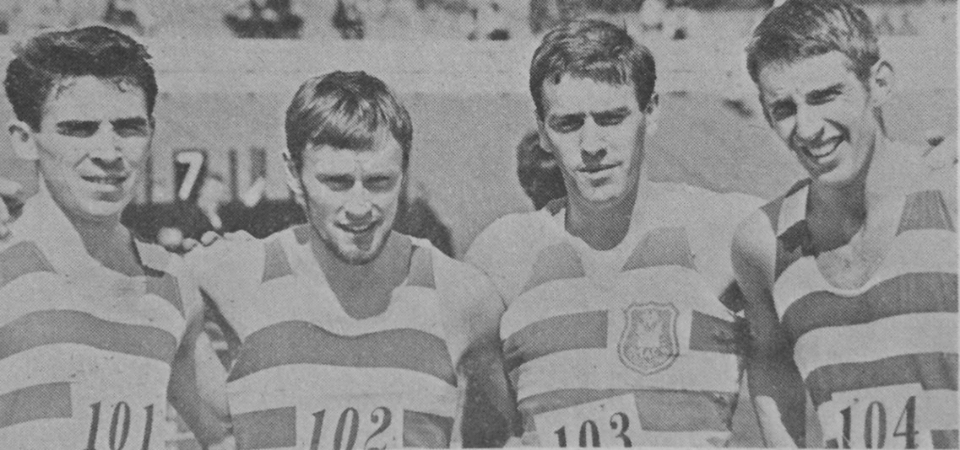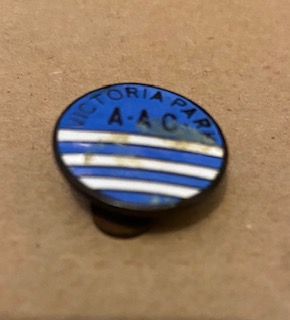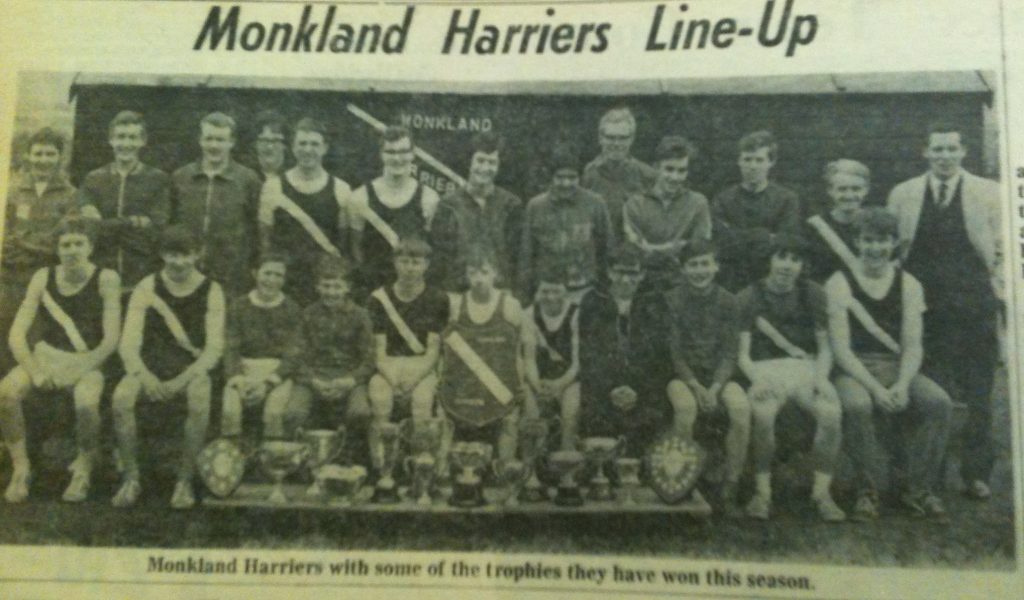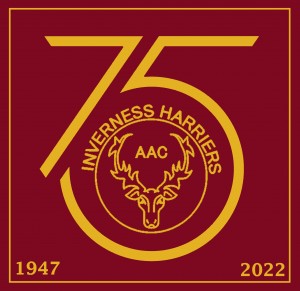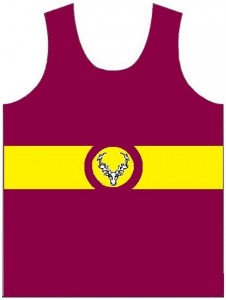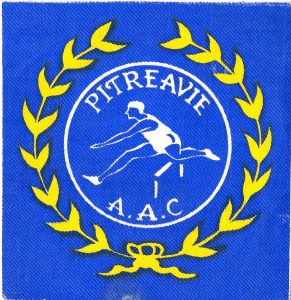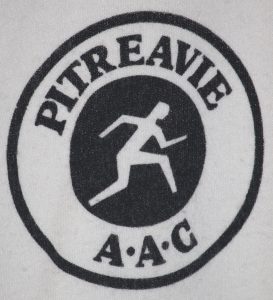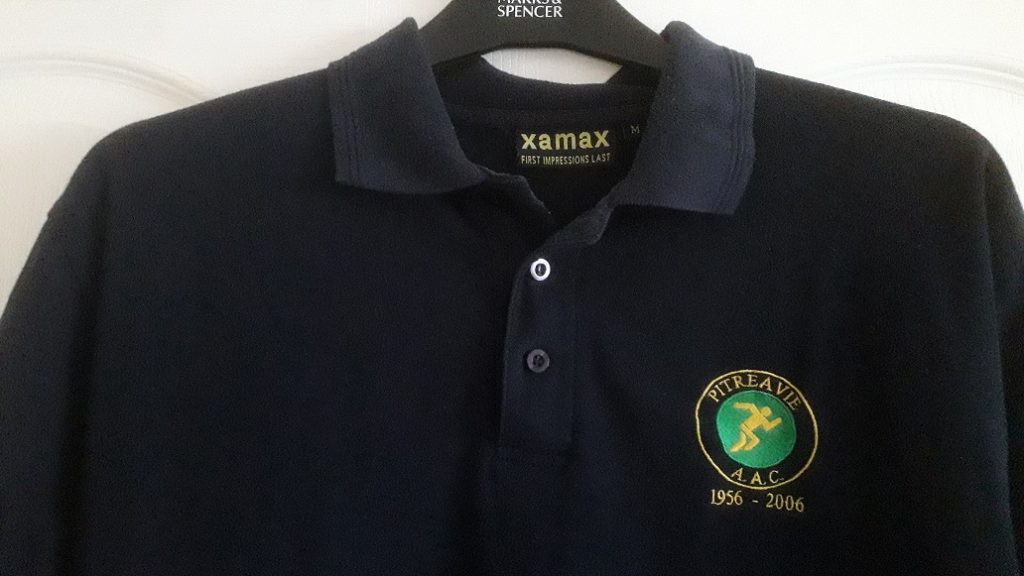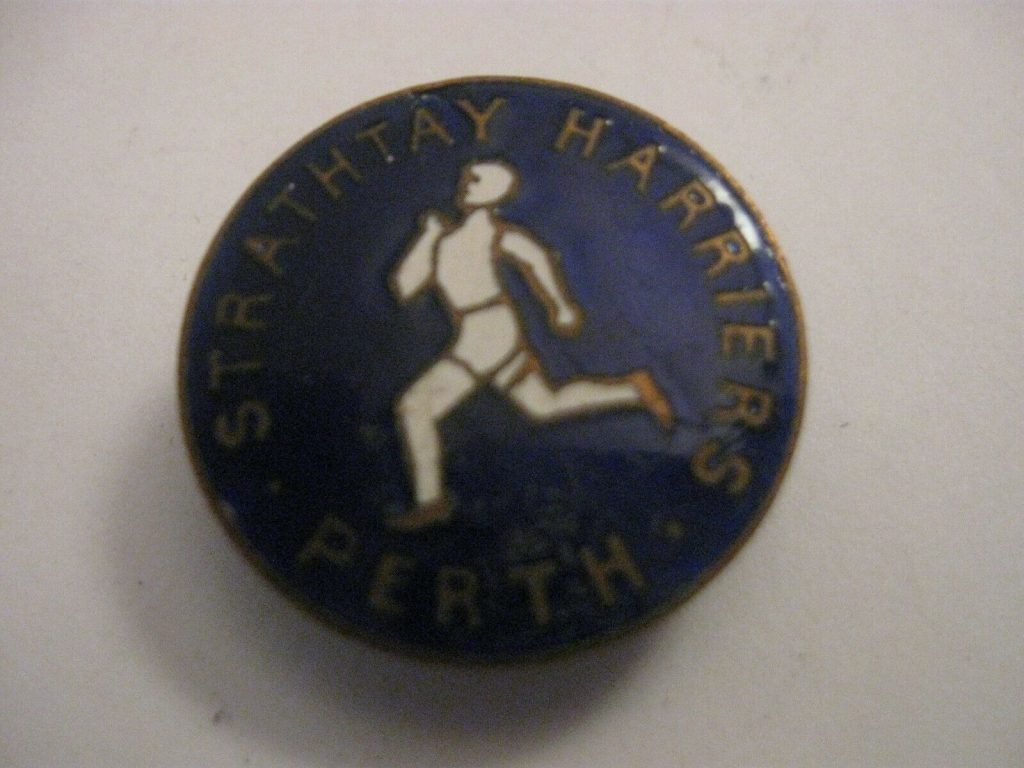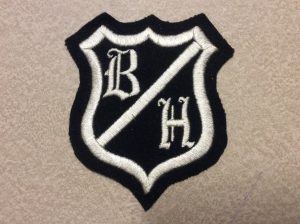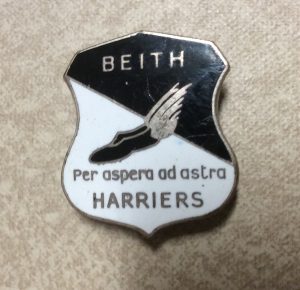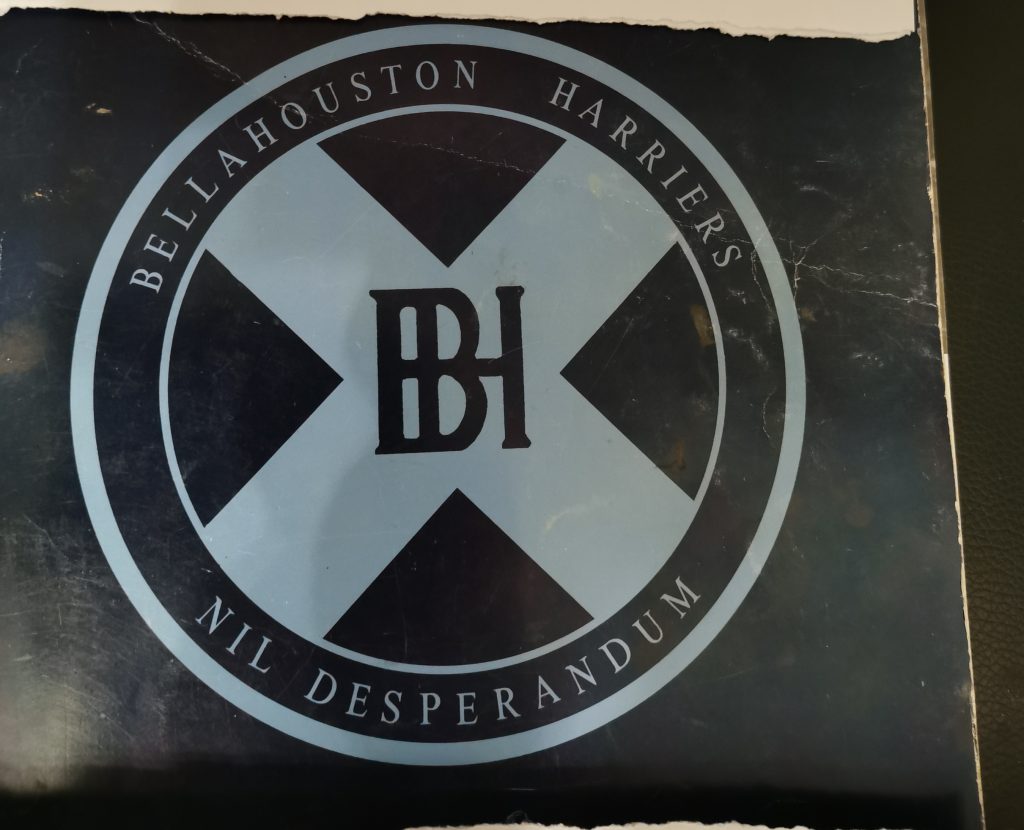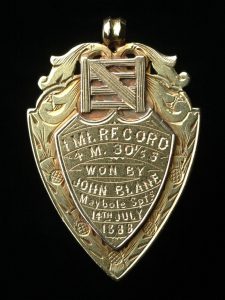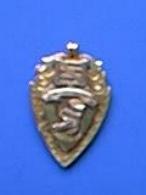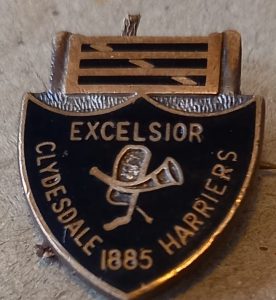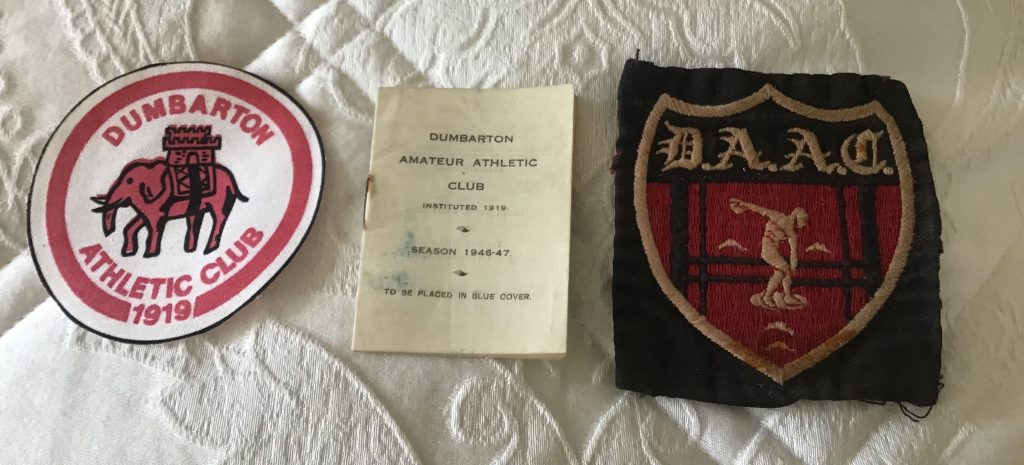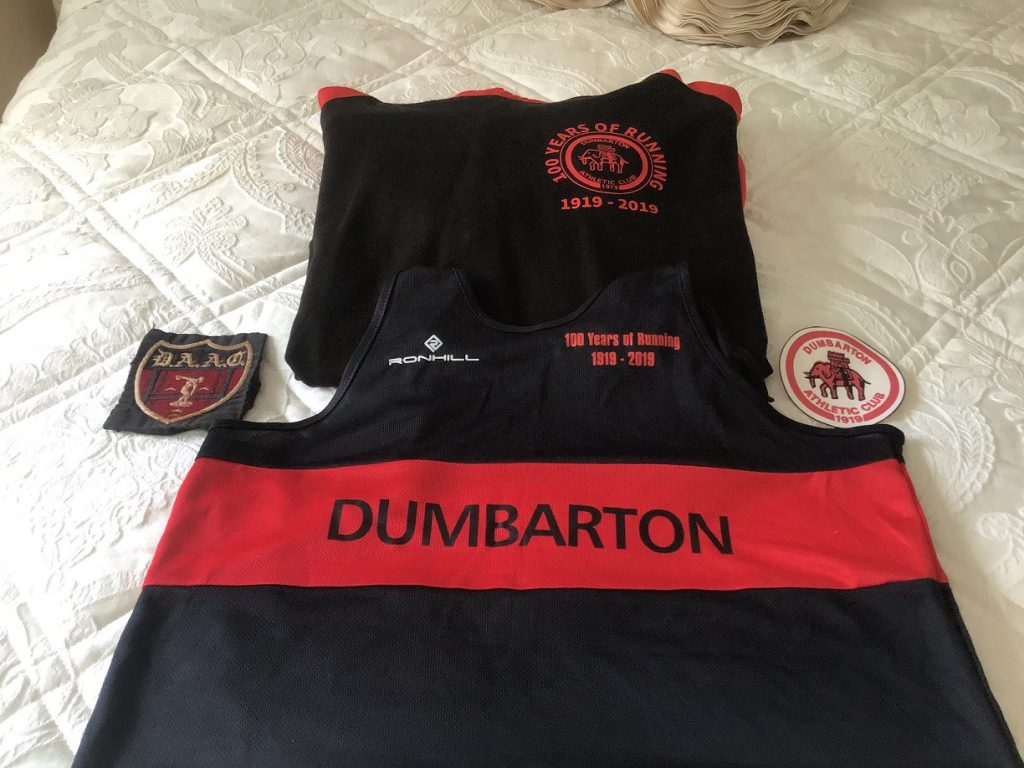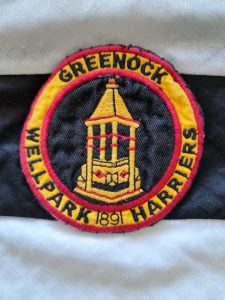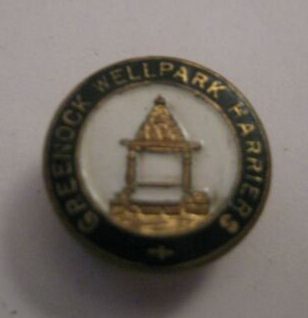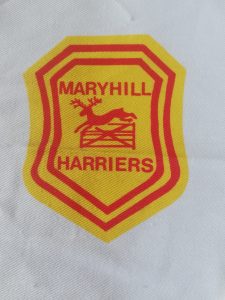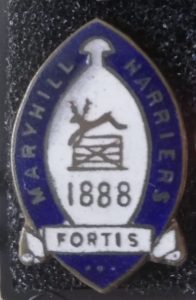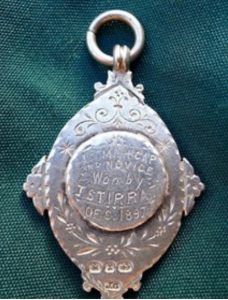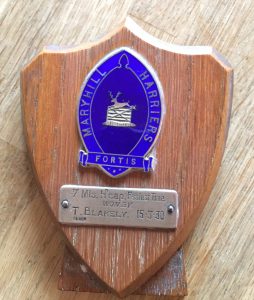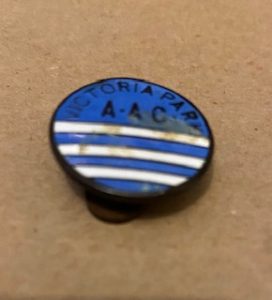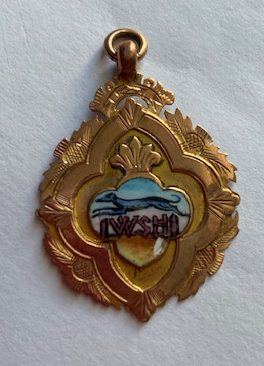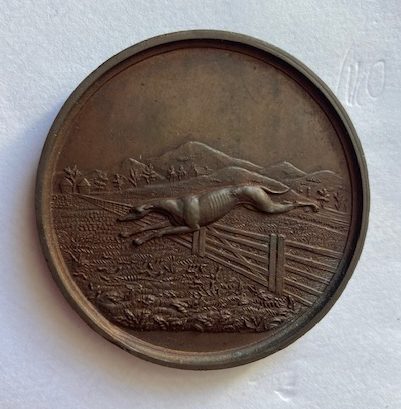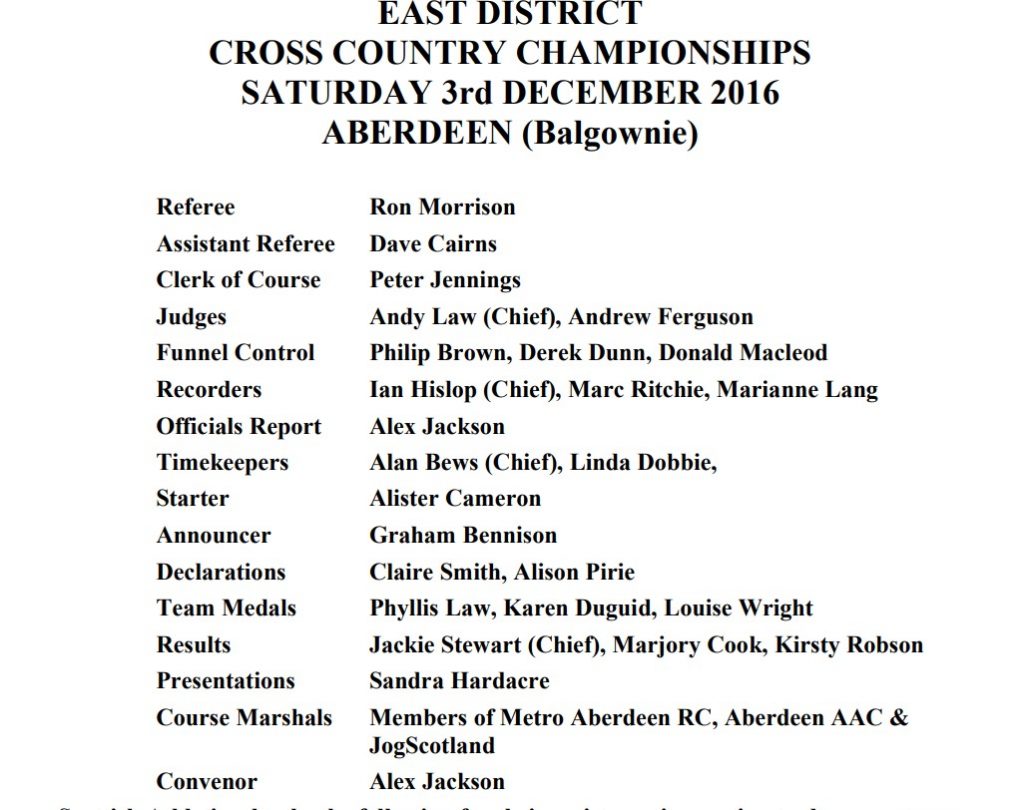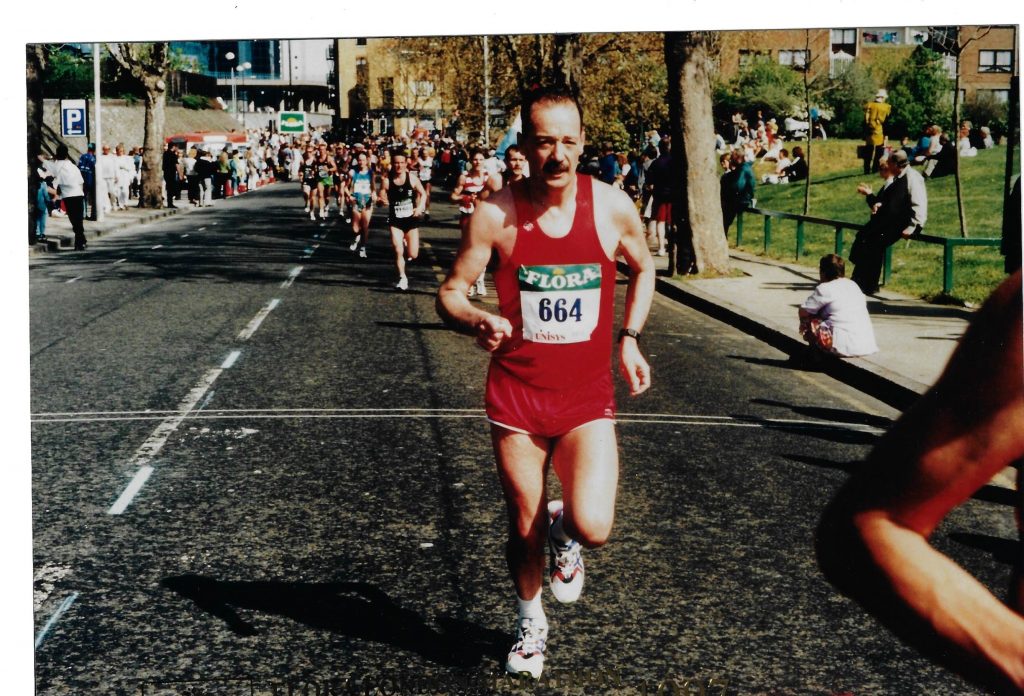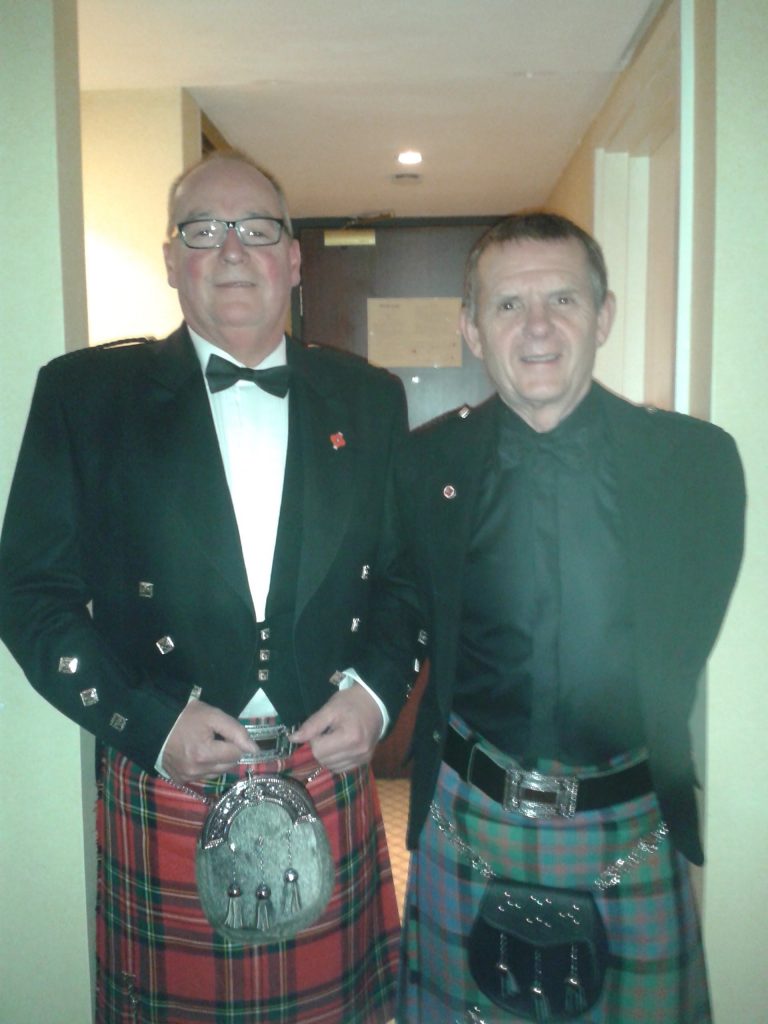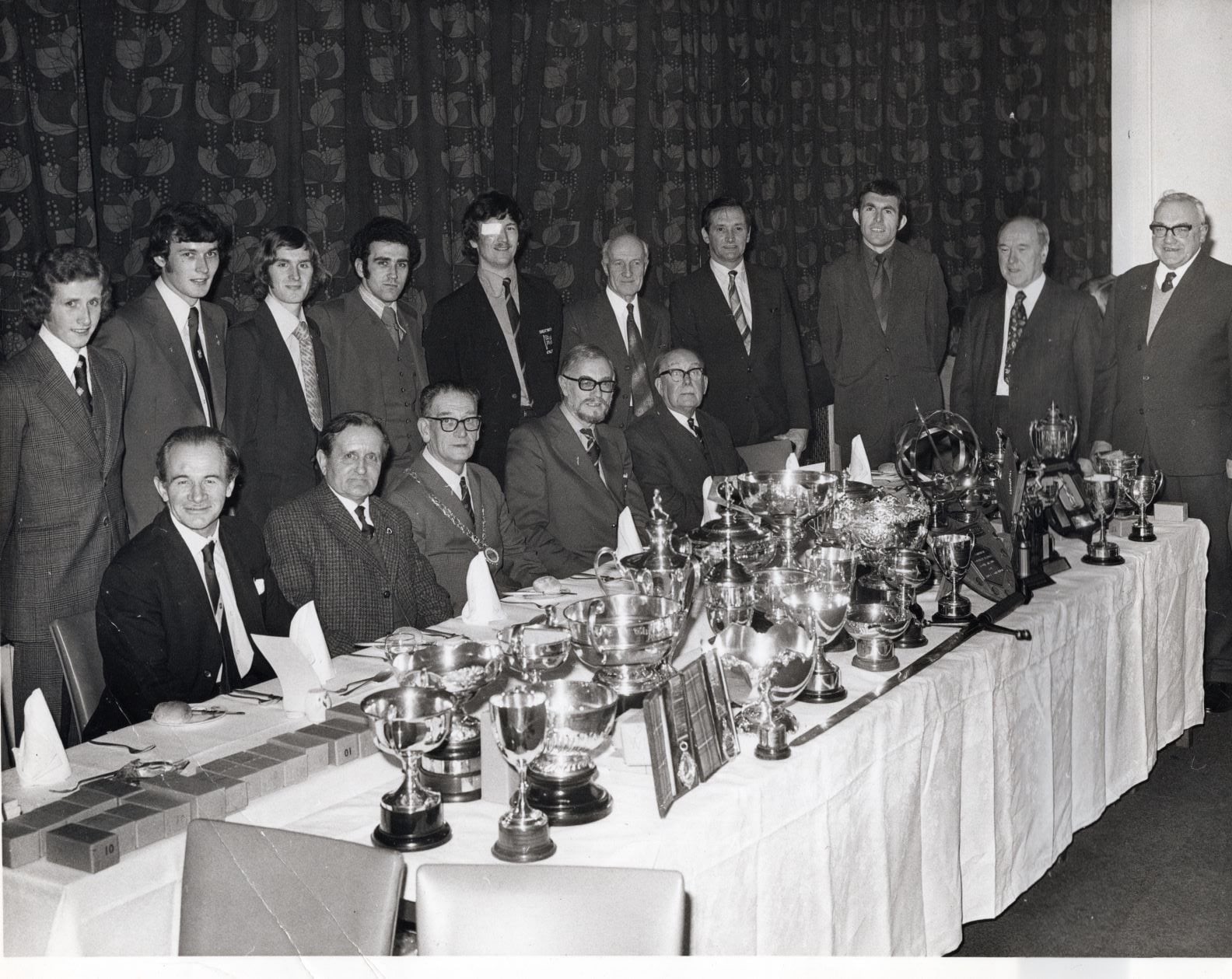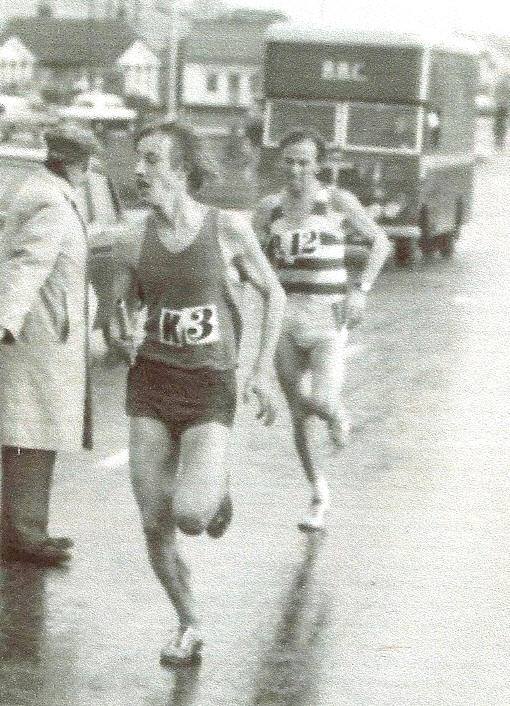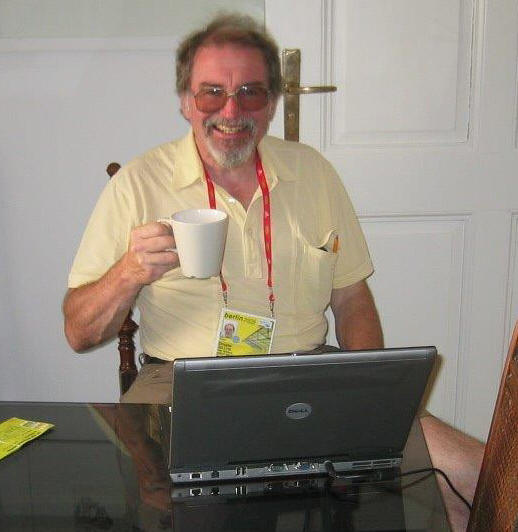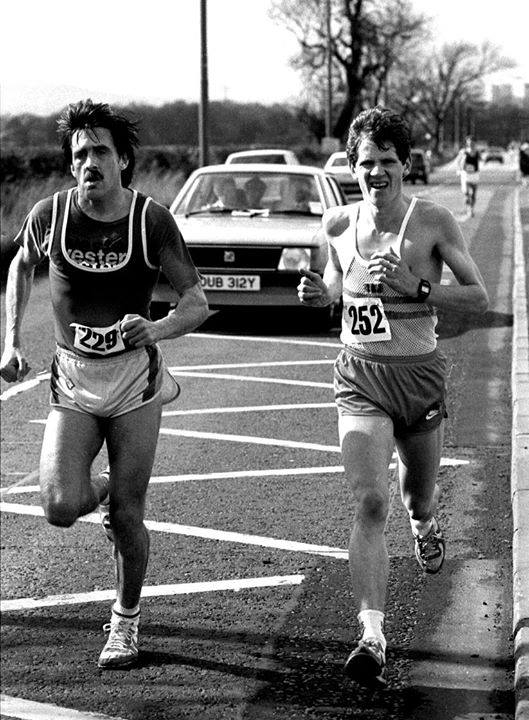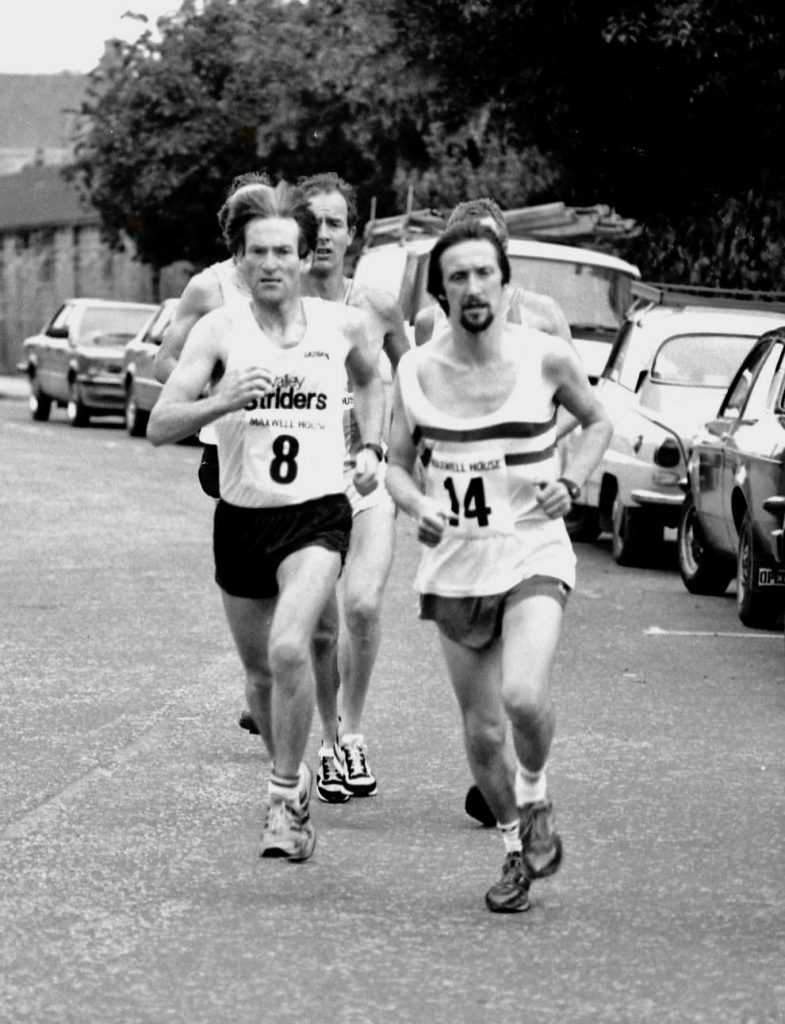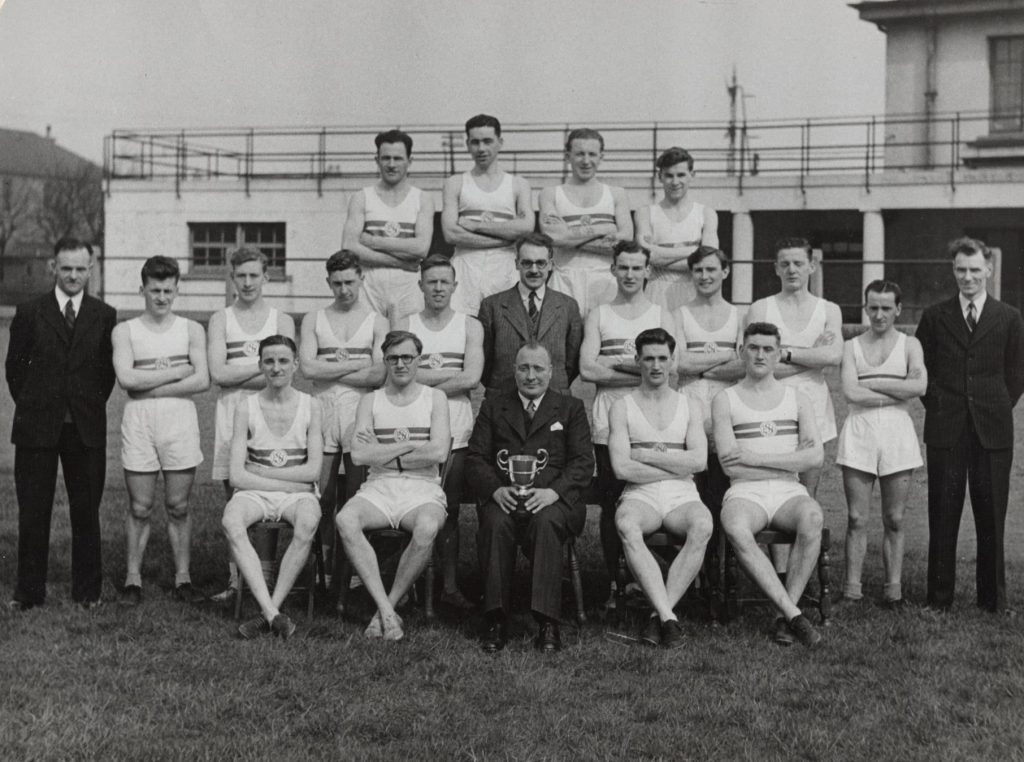World Sports listing of all the 1961 winners many of whom are well known athletes – Stuart Storey, Janet Simpson, Trevor Burton and Alan Carter maybe the best known – but only two were Scots. Hugh of course and Sheena Lofts from Aldershot and the Anglo-Scots team, who ran for Scotland on the track and over the country.
Category: Uncategorized
Ronnie Macdonald
The picture above shows Ronnie Macdonald of Maryhill Harriers on the left with Graham Everett of Shettleston Harriers on the right training together at Balgray in the West End of Glasgow in 1960. Graham would go on to win the SAAA Mile title eight times from 1959 and represent Scotland on the track and over the country. Ronnie would have a good career as a runner but not quite as illustrious as Graham’s although both men would go on to serve their clubs and Scottish athletics for decades.
Ronnie joined Maryhill Harriers in 1947 and stayed with the club all his life. He was an honorary club member, an honour only given in recognition of service to the club. Ronnie did serve the club well – as a runner, as an administrator, as an official, as a coach and, like all club men of his generation, in ways that do not fit into any of these categories.
As a runner, he performed well right from the start. In season 1948/49 he won the Mitchell Shield which was presented for the club’s Youth (Under 17) championship. Two years later he won the Rangoon Trophy which went to the first club Junior athlete to finish in the National Championship. He is however better known as a cross-country man and his best years as a runner were the 1950’s. If we look at his performances over that period in the Edinburgh to Glasgow Relay and the National Cross-Country Championships we see this.
Edinburgh to Glasgow Relay National Cross-Country Championship
| Year | Stage | Performance | – | Age Group | Place | Place in Club Team |
|---|---|---|---|---|---|---|
| 1949 | 7th | 8th – 8th | – | Youth | 35th | 1st |
| 1950 | 5th | 12 – 10 | – | Junior | 56th | 4th |
| 1951 | 4th | 17 – 15 | – | Junior | 17th | 1st |
| 1952 | 5th | 11 – 10 | – | Junior | 31st | 3rd |
| 1953 | 5th | 11 – 10 | – | D N R | – | – |
| 1954 | 4th | 14 – 10 | – | Senior | 94th | 5th |
| 1955 | D N R | – | – | Senior | 114 | 5th |
| 1956 | 5th | 18 – 18 | – | Senior | 130 | 6th |
| 1957 | D N R | – | – | Senior | 123 | 6th |
| 1958 | 4th | 15 – 17 | - | Senior | D N R | – |
| 1959 | D N R | - | - | Senior | 104 | 3rd |
| 1960 | 5th | 18 – 19 | – | Senior | 154 | 6th |
You can see that over the period he ran in 9 Edinburgh – Glasgow Relay Races at a time when the standard was very high – Victoria Park, Shettleston and Bellahouston Harriers all had very strong teams for instance – only twice did he drop a place but over 7 races he picked up no fewer than 10 places. He ran in two after the 50’s – in 1961 he he ran on the 5th stage and in 1962 on the 8th stage. Over the country, he was a scoring runner for the club in the national in every race during this period and was in the first three home for the team four times.
Ronnie winning the handicap mile race at Singer’s Sports in Clydebank
On the track, Ronnie ran in almost all of the Sports meetings: Highland Games, championships at club, local, district & national levels as well as club events. There was a fair degree of success too as the medals on this page show and, at a time when money never changed hands and prizes were in kind rather than cash, one of his trophies was a Westminster chiming clock. He ran in the Glasgow Police Sports as well as in the Rangers Sports at Ibrox, two of the biggest meetings in Britain never mind Scotland. One of the best supported meetings in Glasgow at the time was the Transport Sports at Helenvale track and he was there too. He did of course run in the Maryhill Harriers club championships and some of the medals won are shown on this page.
The photograph from Singers Sports above is very interesting. The runner in the Bellahouston Harriers vest with the St Andrews cross is a chap called Henry Kennedy who emigrated to Canada soon after this and ran for that country in the 1954 Empire Games in Vancouver. He ran in the three miles and finished 11th out of the 20 entries, one place behind Al Lawrence of Australia, in 14 minutes 20 seconds. He was four places behind Scotland’s Ian Binnie. The summer season does not only cover track & field; there is also a comprehensive hill running programme. Ronnie was involved there too: he tackled Ben Nevis no less. He ran in 1968 finishing in a time of 3:04:04 and in 1969 he finished in 3:16:43.
Club Two Miles Championship, 1954
By 1970 he had been running since 1947 – 23 years – on all surfaces using shoes that for many years were simply plimsolls with no padding or cushioning at all. Ronnie was a big man and consequently he was starting to have trouble with his knees. They would eventually stop him running seriously although he could still be seen out training with Maryhill team mate Tommy Harrison. When the Scottish Veteran Harriers appeared on the scene in 1970, Ronnie embraced the concept of age-related competition and joined in as enthusiastically as he could. John Emmet Farrell spoke of the ‘approximately twelve apostles who were in at the start of the movement’ and Ronnie was one of them. The first Scottish Veteran Harriers race at Pollok Estate on 20th March 1971 was held over 5 Miles. Approximately 30 runners from an entry of 42 took part, which included eight teams. There were age categories for Over 40, Over 50 and Over 60. The races were a terrific success – at one point a 39 year old runner was allowed to run for a year as a “pre-vet”! Ronnie ran as many as he could – eg in 1977 the SVHC published race results which included Ronnie in the following results:: in a 10 miles at Grangemouth on 9th April, he was timed at 76 minutes exactly; in a 5000 metres run at Bellahouston on 15th June where there were two races (an A and a B), he ran in the A race and was clocked at 19:43, and in a 10,000 metres on the track at Bellahouston on 7th December, he ran 43:45.
He ran in open and veteran races at home in Scotland and abroad too. For instance, further afield,
- there was a world veterans 25K race in the Isle of Man on 20th May, 1973, where he finished 242nd of 500 finishers in 1;50:31. There were athletes from 23 countries taking part. In addition to the home countries of Scotland, England, Wales and Isle of Man, there were teams from Germany, Belgium, France, Luxembourg, Italy, Holland, Poland, Austria, Czechoslovakia, Norway, Sweden, Finland, Canada, USA, Japan, Korea and Australia. The teams are mentioned because veteran championships would keep growing – by 1979 in Bolton there were all these countries plus. The vets movement was worldwide and Ronnie embraced the whole concept while not abandoning the domestic scene. Indeed his club had many members who enthusiastically supported Veterans (or Masters) athletics – names like Emmet Farrell, Gordon Porteous and Tommy Harrison were top class competitors in this form of athletics.
- he took part in the first World Masters Championships in Toronto in 1975, and in the World Masters 25K Road Race in Glasgow in the 1980’s. He also competed in the Shot Putt in the Scottish Veteran Harriers Championships.
- in Bolton in 1979, there were World Vets 10K and 25 K races. He ran in both. In the former he was 349th of 791 finishers in 41:39, and in the latter he was 432nd of 632 who completed the course, his time being 1:56:26. By now there were athletes from Guyana, Venezuela, New Zealand, South Africa, Lebanon and Romania in addition to those who had competed at Isle of Man in 1973.
Club 1 Mile Championship Medal, 1953
At home, The SVHC Magazine in 1977 had the following results : In a 10 miles at Grangemouth on 9th April he was timed at 76 minutes exactly; in a 5000 metres run at Bellahouston on 15th June where there were two races (an A and a B). he ran in the A race and was clocked at 19:43; and in a 10,000 metres on the track at Bellahouston on 7th December, he ran 43:45. On the country he ran in almost every vets championship and in 1978 he he was 58th at Irvine Moor – four places and 11 seconds ahead of his training partner Tommy Harrison.
He was also operating in the wider sphere of athletics administration at this time. Although Ronnie was a runner, there was more to his contribution to the sport than that. The 1950’s was a time when most members followed the belief that “you did what your club needed you to do”. It was also usual for club members to attend the club’s Annual General meetings and for there to be nominations “from the floor” for the various committee positions. Ronnie followed this pattern and, he was elected club Secretary for season 1957/58 – a mere ten years after joining the club as an Under 17. For some reason he missed the following season but was elected again in 1959/60 and 1960/61 as Club Captain. He stepped back a bit for a year and was a General Committee member in 1962/63. He went on to hold every post of any significance in the club and was President in 1968, the year of the club’s 80th birthday celebrations. The page from the club handbook below indicates the quality of committee members at the time – George Dallas. George Barber, Gordon Porteous, Tommy Harrison, David Bruce, Freddie Graham were all significant contributors to Scottish athletics.
Ronnie worked his way up through the stages on club, County, West District, and National Cross-Country Union Committees. These led to him officiating at Cross-Country races from club events to national championships. In the District and National Championships he worked all through the 70’s and 80’s, usually as one of a team of recorders or with the Area Control Stewards. The other major event of the winter season was the Edinburgh to Glasgow eight stage Relay and there he also officiated, usually as a recorder on two stages of the race. Of course as an experienced and established member of the SCCU, he was also one of the selectors for National teams, and travelled with them to the race. Within the club, he was one of the principal organisers of the Nigel Barge Road Race, the second longest running event on the winter calendar with only the Beith New Years Day race being of an older vintage.
Ronnie had several qualities that are sadly lacking in many officials in most sports: first, he was a very good organiser; second, had a sense of proportion; third, he had common sense; fourth, he was always clear in what he had to say – no obfuscation, deliberate or otherwise. And of course having been a runner he understood the sport from the competitors point of view. A wee story:
At the 1985 National Cross-Country Championship at the Jack Kane Sports Centre in Edinburgh, one of our club members arrived early and declared the team for the Senior Race. There was a good athlete there who unfortunately was not in the programme but the chap collecting the team numbers gave him the number of another athlete who was not going to be there. The chap ran in the other athlete’s place. The chap ran well. This was spotted and a complaint raised. Two of us from our club were summoned to meet a disciplinary panel in Glasgow the following Tuesday where we met a three man panel, one of whom was Ronnie. Two of them were very picky and sticky, telling us that we shouldn’t have done it. In vain we told them that it was an unauthorised alteration to the club team and then Ronnie spoke in his usual good mannered, good humoured fashion and said something like: “Every team manager, if he is being honest, will tell you that at some time or other he runs an athlete under someone else’s name. But if you are going to do it, make sure that you don’t use the name of someone who has run several times for Scotland, and make sure he doesn’t interfere with the race!” And that was it. After minimal discussion, we promised to discipline the errant club member who declared the team, were warned not to do it again, and that was it. That was Ronnie dealing with the matter in a good, common-sense fashion. There was no lecture, he just listened to what was being said, and then cut through the waffle and that was issue dealt with, and did it in a manner that offended neither the panel members nor the club representatives.
But it should be noted that he could be a tough negotiator when he had to be. For instance, in season 1971/2 when the SCCU granted a permit to Springburn Harriers for their Springburn Cup race to be held on the first Saturday in the New Year – traditionally the date for the Nigel Barge – there was what the politicians would call a ‘frank exchange of views’ between the club and the governing body. Some of the correspondence was carried out by Ronnie. This was not his usual or preferred method of working however. eg at a time when the ‘amateur code’ ruled and prizes had to be ‘to the value of’ rather than simply money being awarded, Ronnie waited until the January Sales began, then went round the local shops to buy the prizes for the Nigel Barge Road Race (and often talked them into giving him an extra discount because it was for a good local cause). His ‘people skills’ were of the highest order!
He was also imaginative coming up with ideas for races like the Christmas handicap race round Postie’s Park in Dumbarton for Council employees (he worked in the Council Offices there) with extra awards – such as for the runner who most accurately forecast his time round the course.
When the International Cross Country Union held their World Cross-Country Championships in 1978, Ronnie was asked to take charge of the production of the programmes which he did with his usual efficiency and the printer’s blocks are shown below.
Busy all the way through the 60’s and 70’s he was also listed in the 1977 SAAA Handbook as:
- Grade 1 official for Track, for Throws, and for Jumps. These were three different qualifications, each having a different pathway to Grade 1.
- Club Coach for Middle Distance, Sprints and Relays. (There were three grades of coach – Assistant Club Coach, Club Coach and Senior Coach. Club Coach was approximately equivalent to the current Level 3 qualification.)
Ronnie was always a person who would encourage and help athletes as much as he could and in any way that he could. Peter McGregor of Victoria Park tells me that at an inter-club fixture, early in Peter’s career in the sport he was told by Ronnie “stay with me and you’ll be OK.” Valuable encouragement at the start of a career that would lead to many excellent races and several sub 2:30 marathons.
Although he did not coach a squad of his own as a squad, he would help others to develop their skills and to enjoy their sport. But, being Ronnie, it was not a case of uttering well-sounding homilies, or well-worn cliches: he went to the courses, learned a bit about the events and helped in a practical way. His coaching continued until at least 1990 when he appeared in that year’s AAA Handbook as a club coach for both Sprints and Middle Distance running. His long time friend and sparring partner Des Yuill tells us that Ronnie had a camper van that he used to ‘take runners to races, near and far’.
Club Two Miles Championship, 1953
As a track official he obviously worked at meetings large and small – highland games, local sports, championships and track leagues. As a grade 1 official he was often asked to officiate as a referee – mainly on the track. One of the requirements for a club in any of the track leagues is that they provide a quota of officials as well as cover as many of the events taking place as possible. Ronnie filled in in both categories – qualified officials are worth their weight in gold to a team manager at these meetings, and to have a Grade 1 on the books is possibly worth his weight in platinum. When officiating at a highland games, Ronnie could often be seen working at the high jump: after all he had a Grade 1 for field events too!
He also officiated at international fixtures on all surfaces – below is his official’s pass for the 1970 Commonwealth Games at Meadowbank, and he also worked at the 1986 Games at the same venue. In 1986 he was one of the recorders for the marathon. And, of course, as a long-standing member of the SCCU, he officiated at cross-country international and representative meetings.
The 1990 SAAA Handbook tells us that he was still listed as a Grade 1 Official- but by now it was only for Track events, he had dropped the Throws and Jumps. At that time it was possible to keep yourself listed as an official but with an asterisk added which was marked ‘inactive’. Many took that decision but Ronnie was still active though – 53 years after joining the club. He was certainly still officiating at cross-country and road races and an active member of the Scottish Cross-Country Union.
As a member of Maryhill Harriers for his entire time in the sport, he contributed his share – and more – to the sport locally in Glasgow and across the nation’s athletics communities. At the time of the club’s centenary celebrations Ronnie displayed another talent – he designed special mugs for the celebration. They came in red and blue; there is one illustrated below.
We said at the start that Ronnie was justifiably made an Honorary Life Member of the club. He was a man who enjoyed his time in the sport, and really did make a difference on many levels.
National at Wilton Park, 1989
Tommy Murray, winner of the senior men’s race
The National Cross-Country Championships of 1989 had many talking points or points of interest. For instance
- Steve Ovett, Olympian, former world record holder for 1500m , English cross-country international, was running for Annan. He had moved to Kinmount House in 1988 and joined Annan AAC racing in District Relays (eg Twechar), District Championships (Kilmarnock) and now in the National at Hawick. There had been all sorts of stories about him in the Press – the SAAA were going to change the residency rules so that he could run for Scotland after three months, the finish at Kilmarnock had been changed to a stony, rutted lane to negate a finishing sprint by him and so on. He was a big draw for the 1989 National. ( See the picture below) The press had come to watch Ovett and all went to him after he had finished. His reaction? “You shouldn’t be taking to me you should be talking to that guy over there who has just won the race, ” pointing to to Tommy Murray
- Paul Evans the very good endurance runner from England, temporary Scotsman, was also running – for Springburn Harriers. A member of Belgrave Harriers, he joined Springburn saying that his mother’s family had come from Glasgow and he wanted to run for Scotland. He ran extremely sparingly for the club, ran well in a couple of races in Scotland before deciding that he was English and racing for GB in the Barcelona and Atlanta Olympics. Never actually represented Scotland.
- Clark Murphy, the first Scotland based runner to represent GB in the World Cross Country Championships, after Scotland was dropped in favour of a British team.
- Malcolm Campbell, the Winchester runner, and almost an echo of Paul Evans, in that he ran for Scotland before changing his mind. He won the Youths championship running for Clydebank AC. Campbell also won the English Youths cross-country championship from Jon Brown over 4 miles on 20th February 1988
These factors were all important to the day’s racing – almost as important as who won the actual races. But the weather that day was dire. Doug Gillon in the “Herald” described the Hawick national as having “The worst conditions in living memory,” before going on to give this instance of these conditions: “The mud on one hill, 150 yards long and with a gradient of one in nine, was pouring like a lava flow by the time the runners were on their third circuit. Elsewhere there was a foot of slushy water and some runners finished barefoot. ” Colin Shields reported in his excellent centenary history of the SCCU “(Runs will take place) Whatever the Weather” that 5 inches of snow had fallen overnight “in the worst weather experienced during the entire winter, and that snow had continued to fall throughout the day leaving a covering of slippery snow over an underfoot morass of mud.”
The map of the course, above, is an interesting one, and Wilton Park in Hawick is very pleasant and normally the start of a good day out. Have a look at the map, and then try to retrace the runners’ footsteps next time you’re there. You’ll find that the hill referred to is indeed steep – maybe contour lines should have been added! The following article from “Runner’s World” had some more detail on the trail and on the weather conditions.
After all that, how did the actual racing go? For this one, we can’t better Doug Gillon’s report for the “Glasgow Herald” and we’ll print it along with the results.
.
National at Livingston, 1979
“Livingston was a new venue for the Scottish cross-country championships on Saturday. It provided a tough but rutted trail exposed to near-Arctic temperatures. But later on there was some splendid broth – Scotch of course – in the community centre, and through it all a worthy senior champion emerged. A few days before the championships Nat Muir, the 1978 junior champion, told me how confident he was feeling about running in his first senior championship. His mileage was up to the mark, his speed and stamina work impressive, all he needed was some reasonably firm ground and the title was his. Firm ground he was given – so hard in fact that a few gave up in pain after having gone over on ankles whose ligaments were unable to resist the terrible pounding.” That was the accurate description of the course and conditions faced by the runners in February 1979 in Livingston.
The ‘tough but rutted’ description was a good one. It was a genuine cross country trail with varied surfaces, varied gradients and obstacles but with the added difficulties of ground frozen hard, rocks – not just big stones – sticking up and immoveable at places. The bitingly cold weather did not help either. The map of the course, drawn up by noted orienteer Martin Hyman, included contour lines. Had the runners known what they were, their plans for the afternoon might not have included a cross country race. Have a look at this and try to estimate the gradients and general topography.
Colin Shields in his “Whatever the Weather” described the situation thus. “The races were held in bitter, arctic conditions over a tough course made difficult by ice hard, rutted underfoot conditions.” The pictures on the page so far illustrate how cold it was – runners in a national championship wearing long sleeved tops under their vests, hats, gloves and a couple with old socks on their hands (the story is that unlike gloves, they keep all your fingers together and so warmer than if they were separated!)
The race almost didn’t go ahead because of a dispute involving the local school janitors. Shields again: “The Union was given a special dispensation by the National Union of Public Employees, which allowed the janitor at Deans Community High School to waive the overtime ban and open up the school on the Saturday for changing facilities for the 1800 entrants in the five championship races.”
So after all that how did the race go?
The story of the race was simply told. Ron Marshall in the “Glasgow Herald” gave the facts as follows.
“Muir’s performance in bitter conditions was quite astounding. As each of the four big laps unwound he became faster each time – 8 min 32 sec, 8:27, 8:21 and finally 8:17. By that time Lawrie Spence, his most dogged companion in the early stages, had been left nearly half a minute behind, himself ultimately 23 seconds clear of the third man, Jim Brown.”
The first 30 of the 255 to finish the course were:
The complete result – place, number, name, club and time – for them all can be found at
Colin Youngson ran for Edinburgh Southern Harriers that day. His club won the team championship (and retained it in 1980). In a diary, he wrote: Scottish Senior National at Livingston. ESH: Ian Elliot 9th, Dave Logue 10th, Ian Orton 15th, Allister Hutton 19th, Me 29th, Martin Craven 30th. (Evan Cameron 36th). Winning total 112 points (from EAC 172). Terrible icy rutted conditions. Hilly. Sore legs and feet. Very cold wind – almost blind in one eye. Bumpy. Lost eight places in the last lap. Disappointing personally but just adequate. Won the team at last, though! (after contributing to three team silver medals).”
But infairness to Colin, it was a real high quality field – check the website address above – with quality international athletes being placed outside the first 50 of the 255 finishers.
Alex Jackson also shared some memories of the day:
- Seeing an unhappy Alastair Hutton going up the funnel, he had won at Bellahouston in 1978 and was 19th at Livingston. However he was fourth counter for the winning ESH team.
- Other facts: Robert Hawkins won the U15 boys race, his one and only National win.
- The Community school was demolished around 10 years ago, a new school built close by.
.
National at Glenrothes, 1977
The National held in Glenrothes was the fourth to be won by Andrew McKean (Edinburgh AC – above), the third in a row, and there was a second place between the first and second. He won in 1973, 1975, 1976 and 1977 with second place in 1974. A strong first-rate athlete who had both strength, speed and intelligence. Nor was he short of courage and confidence, being prepared to take the race on from quite early if he felt it was the thing to do.
It was one of the most memorable nationals in terms of the snow and the cold – and the quality was not half bad either! It was another dreadful week for the weather across most of Scotland: “Widespread torrential rain, gales, sleet and snow brought havoc and flooding to many areas of Scotland yesterday. Road and rail services were severely disrupted by flooding, schools had to close, and one Fife village – Pitscottie near Cupar – was marooned.”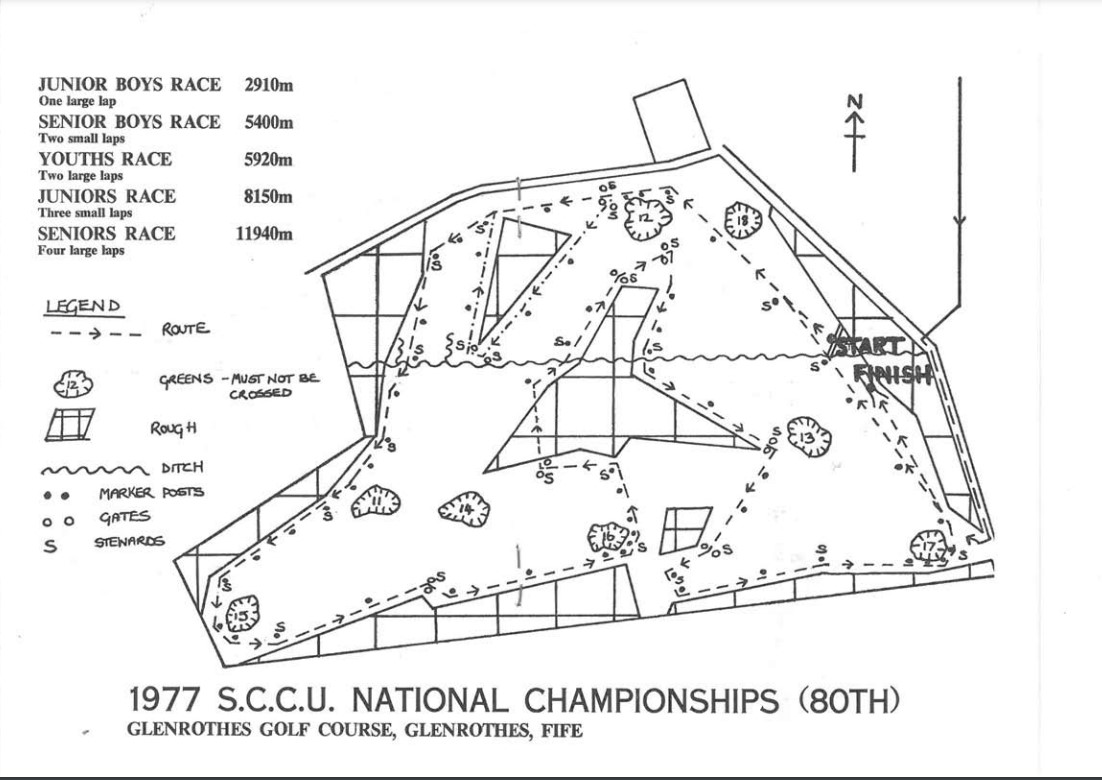
The race, held on 12th February, came during a spell of very cold weather – several athletes missed the race because of illness or injury sustained training on icy roads or, in at least one instance, on an icy track. The “Glasgow Herald” reported as follows. “McKean is a runner who is at home whatever the conditions underfoot. Glenrothes Golf Course resembled more an alpine ski area on Saturday, coated with six inches of snow, and yet the job got done by McKean, after touring fairways and boundaries in a way which almost made skis redundant. Not that he claimed the race had been simple. As the snorting, spitting and wheezing from some of the less able of his 400 opponents rasped around us, just after the finish he spoke most respectfully of the trail. “It’s the toughest for a national championship that I’ve run in,” he observed. “The hill really stretched you, whether you were going up or coming down”
Nor was he wrong! The snow was actually covering the ground except where the younger age groups had beaten it down into a mushy mess and there were several spots on the course where the ground sloped in two directions at the same time. On a good day it would have been a tough course and a challenge to all the competitors: on 12th February 1977 the challenge was multiplied by three or four. The fact that he won the race, and the way in which he won it, proved that at that point McKean was the best runner Scotland had on a rugged course. Look at the results:-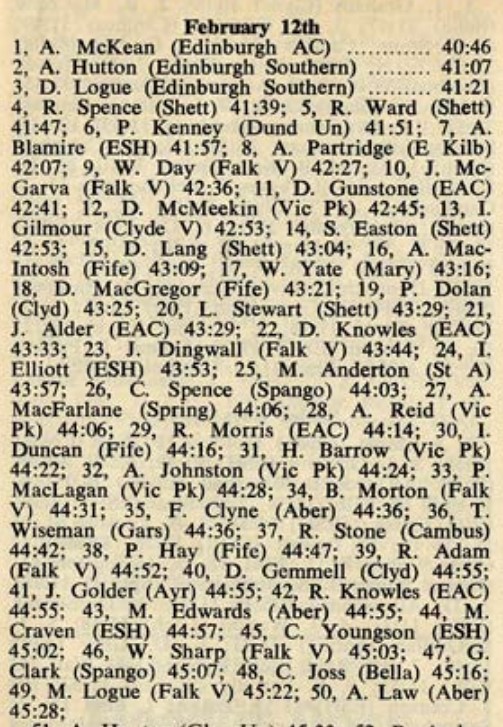
Every man there was a quality athlete. Look at some of the names – note how many were Scottish champions Hutton, Logue, Blamire, Spence, Gilmour, McMeekin, Macgregor, Macfarlane, Barrow, Johnston, Clyne, Craven, Edwards, Youngson; Lachie Stewart down in twentieth after a bout of ‘flu and maybe shouldn’t have been running, Jim Dingwall in twenty-third; more Scottish international runners in Phil Dolan, Stuart Easton, Willie Day, Alan Partridge … every one a class act and every one treated the course with respect and every one tried hard. But on an afternoon such as that, all finishers deserved credit.
Again the trail on a bad day was a multi-lapper: four laps, three opportunities to drop out. There were again five races and the senior men’s race had 422 entries but only 270 finishers. There was fortunately nothing actually falling on the day of the race, but the changing accommodation was a short walk away from the course, crossing what seemed like a busy road.
The officials at events like this do not often get the credit that they deserve and, at Glenrothes in 1977, there was a very large number of officials known to most of the athletes by their Christian names – Alex Johnston, David Morrison, Neil Donnachie, Bob Greenoak, Des Yuill, Ronnie McDonald and many more. Look at the list below.
National at Duddingston, 1969
It’s a good picture shown above – but it doesn’t show the weather conditions that the competitors had to endure. Held on 22nd February 1969, the race was run over 5 laps on the Duddingston Golf Course in Edinburgh. The five laps tell a tale – I have seldom run a senior cross-country race over 5 laps, and to pass your warm tracksuit at each of the first four laps here was a great temptation to drop out. Many took the chance but it is a tribute to all the finishers – in all the age groups – that they did master the difficulties.
The race was organised by the SCCU with its usual efficiency and all the experienced and qualified officials were in place for the afternoon. They had to stand for all the races – and there was a total of five races to keep them occupied in the cold and sleet. There were 1237 entries on the programme (422 senior men) and 605 finishers (196 senior men). Although the number of entries does not equal the number of starters in any race, the fact that less than half those entered finished does tell a tale. It had been a week of really bad weather – the front page of the Friday “Herald” had a picture of the Duke of Edinburgh striding through a blizzard when he visited the site for the Commonwealth Games the following year. We are told that he was greeted by “driving snow”. The overnight weather in Edinburgh was freezing cold. How did the race go then?
The basics were reported in the “Glasgow Herald” on the following Monday, reprinted in its entirety below.
WEDLOCK’S SCOTTISH TITLE VICTORY BY 45 YARDS
Dick Wedlock (Shettleston) won the Scottish senior cross-country title at Duddingston Park, Edinburgh, on Saturday when he covered the seven and a half miles in 32 min. 59 sec. AF Murray (Edinburgh Southern) was second, 45 yards back behind, and W Mullett, an Anglo-Scot running in Shettleston’s colours, was a further 20 yards away in third place.
“Wedlock shared the lead with JN Alder (Edinburgh AC) after three laps of the five lap race, five yards ahead of J Wright (Edinburgh AC). They were followed by Mullett and Murray. With one lap left Wedlock was out in front, and the holder, JL Stewart (Shettleston) looked tired in eighth position. Stewart, however, had not completely recovered from a bout of influenza, and did well to finish in 10th position.”
Which is fine as far as it went.
What made it different?
First it was the dire weather. Colin Shields described the course as “icy, rutted and rock hard after a bad spell of weather.” Colin was being polite because he is a gentleman. Athletics Weekly gives a more detailed description: The Scottish 7 Miles cross-country championship was run over a park that closely resembled a half-frozen lake as a result of a quick thaw earlier the same day. In conditions that were atrocious for athletes, officials and spectators alike, Ian McCafferty was a non-starter and Alistair Blamire had only recently resumed training after illness.” And note the comment below the photograph above:” They raced in bitterly cold, sleet laden wind with snow underfoot.”
So the weather was bad, although the other word above, “appalling”, might be better. Runners were wearing jerseys, even track suit or wet suit tops under their club vests, many wore gloves and some wore woolly hats.
Then there was the course itself. Cross-country does not often find itself run over five laps. Runners don’t like running in small circles, and in the Duddingston instance with awful weather, it was cruelty to make the athletes pass their warm tracksuits and wetsuits four times in the course of the race. There were not a few who succumbed to the temptation.
It was also basically flat but in the absence of natural cross-country obstacles, there were pairs of steeplechase barriers placed side-by-side to be leapt, clambered over or ducked under. No runner liked them – in one English national in the 1960s there was a similar arrangement and Jim Hogan slipped through between the two barriers only to be disqualified. His defence was that in a cross-country race you can negotiate any obstacle as you please. However that may be, the rush at the start in Edinburgh pushed over one of the two barriers, and the competitors then went through that side. An official, I believe it was Harry Quinn, was sent to tell the runners to ignore the barrier that had been knocked over and instead cross the one that remained upright. It was a losing battle – after all, he was outnumbered.
After all that, what was the result of the race?
It was not a day for the faint hearted, but spare a thought for the officials who had to stand for all five races: at least the runners only had to run the one race before heading for the changing room and a warm drink. It was one of the most uncomfortable days for the national that most of us had ever experienced. Well done to all who took part.
Club Insignia
It was originally the case that harrier and athletic clubs – like other clubs or societies had their own club crest and slogan or motto. This was for several reasons but all had to do with club identity, not only on the field of competition but in day to day living when club members showed solidarity each other and pride in the club by wearing the club tie or lapel pin. This is, maybe unfortunately, no longer true of the majority of clubs. We should however at least acknowledge the fact that they were used and are still used although not to quite the same extent. We will look at some of them here, noted in chronological order.
When I joined Clydesdale Harriers in April, 1957, I was given a blue club handbook and encouraged to buy a metal lapel badge. The badge had the club’s insignia of hunting horn and whip with the club name above and the motto ‘Excelsior’ (meaning ‘the best’) below – exactly as in the picture above but without the dates . The hunting horn and whip refer back to the origins of the harrier clubs.
Q: Why was a cross-country runner called a Harrier?
A: The Harrier was a small dog used by huntsmen to flush out the quarry
A quote:
“ The history of the word dates back to the 1800s when British schoolboys started playing a game called “hares and hounds.” Like hide and seek, the hares would leave from a common spot before the hounds chased in pursuit. Outside of the schoolyard game, the type of hound that was bred to chase hares is called a “harrier.” These dogs are incredibly skilled in chasing and hunting–much like a runner in pursuit of the competition in a race..”
Clydesdale Harriers was the first Scottish open athletic and harrier club in Scotland and was largely modelled on the gentleman’s clubs prevalent at the time. The clubs that followed also had their crest (‘logo’ in newspeak) and a Latin tag. These tags usually had to do with courage, or hard work, or similar manly attribute. Whether the club was born before 1914 or after 1945 the club badge was important to the members. But to begin at the beginning –
The representation above comes from the club handbook of 1890-91. Name at the top, hunting horn and whip which were harking back to the origins of the harrier movement and the club motto of ‘Excelsior’ which is |Latin for ‘the best’. There is no date because the club was first open club. The badge was on the left breast of the club top (like the modern T shirt) and the cross-country runners and teams had a five-barred gate on the back. As the Rules in the club handbook state:
Club championship medals were of gold, silver and bronze and in addition gold medals were awarded by the club to any athlete setting a Scottish record. The one below was to John Blane for setting a Scottish mile record.
When the club lapel badge was produced, it had the shield with crest and motto with the addition of the gate at the top. Modelled on the gentleman’s club of the day, the harriers had a constitution which followed the pattern set by them Other clubs followed the example set in various ways.
We’ve no picture of it, but the Edinburgh Harriers crest was a simple, red, five barred gate on the front of a dark blue vest but there was, to our knowledge, no motto at all.
West of Scotland Harriers, formed in 1886, had a series of vests/singlets as follows:
- 1886 – Chocolate with blue dog on back and gold dog on front;
- then in 1887 – Black with pale blue trim, Sky Blue and Black Harrier, with dog and a five bar gate.
- Subsequently changed again to sky blue vest with black band and dog over a five bar gate centre front.
The crest below was the last one described above and depicts the hunting hound clearing a fence at speed and the struts on the fence happened to spell out the letters W, S and H in gold lettering.
The crest of dog and fence appeared on race awards too:-
eg Tom Cruden’s medal for being 2nd in the club championships
Medal given by the club to AG Rennie to commemorate Shrubb’s world records 1904 at Ibrox. It is engraved reverse side (below). Rennie was chief timekeeper. It’s printed a bit larger so that the inscription can be read.
Gates were generally popular and also appeared on
- the Perthshire Harriers vest of 1887 in white on a blue background, and
- in the same year Dunfermline Harriers had a blue gate on a white vest, and
- Kirriemuir Harriers had a white gate on a maroon vest and
- Ayr Harriers, 1888, had a three barred hurdle with the slogan “Gang Forrit” on it.
GANG FORRIT
Maryhill Harriers appeared on the scene in 1888.
The Maryhill Harriers vest was blue with the yellow badge above showing a deer leaping over a five-barred-gate. The club motto was Fortis, again the Latin tag, meaning ‘Strong’. Note the presence of the motto on the lapel pin below which dates from the 1930’s-50’s.
Craig Perrie at Maryhill has an excellent page on the Maryhill Harriers insignia and its development on the club website and we urge you to read it at
Club-Crest-History-and-Evolution-latest-Apr-2022-blue-banner.pdf (maryhillharriers.com)
“It is believed that the original crests were embroidered directly onto vests. The original vest badge colour scheme was a yellow background with red stitching. Later versions were screen printed onto a sheet to then be cut-out and sewn onto vests. The vest badge crest design and colour scheme remained largely unchanged from its inception until the mid-1990s. The badge/crest position was (and still is) always positioned over the left breast on a Royal blue coloured vest.”
The club crest was held in great esteem by the club and club members and appeared on the running vest, on stationery, on lapel badges, blazer badges and also on race medals. The one below dates from 1897 and is from Maryhill Harriers. The reverse is on the next page. Note the lion rampant but not deer or fence.
Club insignia was shown on a wide variety of objects, not just badges. Including programmes, menus and order of proceedings.
Fortis
The sport was spreading all over the country and in 1889 Teviotdale Harriers was formed with the white vest and broad maroon band as their racing outfit. The club history tells us that in 1896 – It was in this year that a GATE was adopted for club stationery, with the paper to have maroon lettering. The Teviotdale gate looks like this –
The Teviotdale Harriers Gate – taken from the cover of their centenary history.
Greenock Wellpark Harriers were established in 1891 and their white vest with broad black band had the club crest in the middle: a simple roundel with the image of the Well from Wellpark in Greenock and the club name round the inside of the circle. Initially in blue, the crest was later changed to gold. As with several other clubs, they had a metal lapel badge which is shown below.
The actual well in the park is still there as the photograph below indicates.
The club eventually merged with Spango Valley to become Inverclyde AAC but to that time the badge with the well was worn with pride by many really top class athletes. Note the crest on the vest of the great Wellpark team on the 1950’s and early 60’s including the Stevenson brothers, George King and Bill Stoddart.
The pattern emerging is club name, club motto and club crest, but Bellahouston Harriers changed the pattern a bit.
The club vest was dark blue with a light blue cross of St Andrew. The badge was a simple circle with the club initials entwined in the centre and the motto Nil Desperandum. Founded in 1892 they had every reason to have the date of inception included but chose not to. The meaning of the Latin motto was ‘Never despair’ or ‘never give up’. Incidentally, the Irish club Clonliffe Harriers has the same slogan.
Nil Desperandum
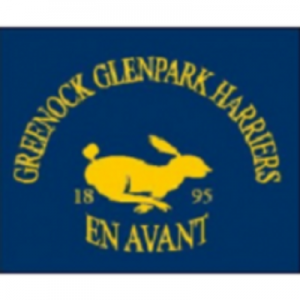 In 1895 the Clydesdale Harriers Greenock Section became an independent club in their own right and chose the name of Greenock Glenpark Harriers and broke the Latin stranglehold on mottos when the decided on a speeding hare with the motto in French en avent. Worn and easily seen on team members in the following photograph.
In 1895 the Clydesdale Harriers Greenock Section became an independent club in their own right and chose the name of Greenock Glenpark Harriers and broke the Latin stranglehold on mottos when the decided on a speeding hare with the motto in French en avent. Worn and easily seen on team members in the following photograph.
En Avant
Springburn Harriers brought their own neighbourhood into it.
The Springburn badge as shown above is front, top, centre of the vest, the diamond represents the North British Loco Works that was the main employer in the area when the club was founded. The year of the club’s birth is there and the Latin motto means ‘Bravery Overcomes All Things’.
But why the diamond? The club website tells us that the badge and crest (above) was taken from the railway locomotive factories based in the area, and their motto means ‘courage conquers all’. Ian Young tells us that “the Diamond on the Springburn vest is a copy of the trademark of the North British Locomotive Company in Springburn which was owned by Sir Hugh Reid” . Reid was the first chairman of the North British Locomotive Works – the largest builder of steam locomotives anywhere in the world. From its headquarters in Springburn over 18,000 locomotives were exported to all points of the compass. The diamond therefore has a real significance for the area and for the country. The diamond on the club vest is however turned through 90 degrees from the firm crest, see below.
Note the vests worn by Jim Cooper and Alex McIndoe in the Edinburgh to Glasgow Relay below.
Fortitudo Omnia Vincit
Garscube Harriers appeared on the scene in 1898 and there were several interesting features attached to it. The shield had a thistle in the top third, the club’s initialls in the middle and the club name below. The motto was in French and not in Latin – en avant means one of two things – Forward or In Front, and certainly the club was successful from the very first. It was placed right at the top of the shield and across the thistle.
En avant
THE VEST IS THE CREST
In many clubs, certainly the great preponderance of more modern clubs, ‘the vest is the crest’; in other words there is no club insignia other than what is worn on race day, and there is no motto, slogan or even battle cry which helps the club identity. Some of these from other 19th century vests and crests are noted here. I particularly like the footwear for the Scottish Pelicans
Swift Harriers (Aberdeen) 1889 – White with dark blue star
Thistle Harriers (Dundee) 1890 – Blue Cap with thistle, white semmit with blue borders, blue and white belt, white knickers, royal blue socks. Emblem – Thistle
If we come forward into the 20th century, Falkirk Victoria Harriers were founded in August 1901 and their crest deviated from thits predecessors in having a good Scots slogan.
Touch Ane, Touch A’
Shettleston Harriers club was founded in 1904 and the original club uniform was a white singlet and white shorts. It was two years before they switched to the now well-known blue and gold. Their club badge favoured a torch.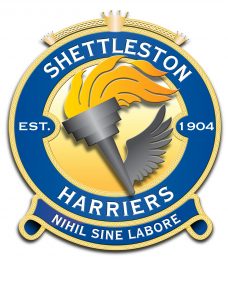
All the traditional features were there. The club name of course, the date of establishment and the motto in Latin meaning ‘Nothing without Work’
Nihil Sine Labore
Dumbarton Amateur Athletic Club was formed in 1919 and the club colours were of black with a broad red band. The actual badge decided upon was a bit more complicated than most. Described by Alistair Lawson below and then shown in a photograph from Allan Adams:
“”The shield motif on the DAAC tie is made up as follows:-
– Across the top, in gothic-style letters, is D.A.A.C. in white, on a
dark blue background.
– In the centre, an athlete in discus-throwing pose, arm back,
starting the wind-up.
– The background is red, with what look like rugby goalposts, i.e. a
large H shape, double-lined.”
There was no motto or slogan attached to it.
Beith Harriers were founded in 1923 in Ayrshire and their badge is an interesting one. It has the winged foot logo favoured by many athletics among them many more modern clubs. eg The New York Athletic Club adopted the ‘winged foot of Mercury’ in 1876. Club colours being black and white the club adopted a shield diagonally divided into black and white sections with the winged foot and the club slogan of ‘per aspera ad astra’ which is another Latin phrase meaning ‘through hardship to the stars’. The club’s name was top and bottom of the shield. This logo appeared on vests, lapel pins and track suits.
Per Aspera Ad Astra
Dundee Hawkhill Harriers were founded in November, 1924, and the badge of a hawk above comes from a booklet on the club’s activities published in 1945 by A Mudie. The slogan or motto means “Neither Tarry Nor Rest” – a good one for a harrier!
Victoria Park AAC was formed seven years after Beith Harriers, in 1930, and had an interesting variation in mottoes. The club crest was a shield with the club’s initials entwined at the top above wings in front of a golden rising sun. The club slogan is encapsulated at the bottom and reads Nitor in Adversum. Latin again, meaning ‘ I strive against opposition’. The badge can be worn on track suit or on the competition vest. The club vest was well-known in its own right and not all athletes had the badge sewn on – eg only one in the photograph below.
Victoria Park AAC was another club known immediately by their vest – the blue and white hoops were recognised everywhere. They had their badge, they had their Latin motto, but the blue and white hoops were one of the most recognised – and respected – outfits in the country. It is not surprising therefor that their lapel badge was simply the club name and blue and white stripes.
Nitor in Adversum
Monkland Harriers were, like Greenock Glenpark Harriers, an offshoot of Clydesdale Harriers and many top class athletes (such as Olympian Sam Stevenson) were from the area. Like other clubs from the 1930’s their crest was their vest’. In other words, the only unique identifier was the competition vest. Note the club shield in the picture below. The boy in the centre of the front row is holding it.
As after the 1914-18 war, many new clubs appeared on the scene after the 1939-45 hostilities. One of these was Inverness Harriers who were established in 1947 and celebrate their 75th anniversary in 2022. The current club logo is this one.
After the 1939-45 War several clubs sprung up across the country and Inverness Harriers was one of the most successful of these. Their vest has undergone several changes since their first appearance in 1947 but two things have remained constant – club colours (maroon and gold) and the club crest.
The vest was originally maroon with a gold band and the stag’s head in the centre, as in the illustration below. The suggestion on the club website is that the choice of the stag’s head is because one of the club’s founders was Tom McKenzie and the clan McKenzie crest is just that – a stag’s head.
Another of the post-war clubs is the very successful Pitreavie AAC Their original crest from the club’s inception in 1956 was blue with the Olympic style laurel round the athlete. At that time the club vest was royal blue. The badge was changed when the club colours were changed.
The club logo at present is a simple double roundel with the club name and a stylised sprinter in the centre.
They celebrated their 50th anniversary in 2006 and the club produced a good quality polo shirt. It was designed as a one off for the 50th and all Club members purchased their own. They were given to visiting Officials who came to officiate at the Inter Club meeting which was held to replicate the type of meetings which were held when the club was formed.
Perth Strathtay have been a part of Scottish athletics since the 1940’s and they too have simple roundel badge
The lack of a classical education which enabled a primary school janitor to come up with a latin motto for the club vest is a good reason for not having the motto in that language, but Greenock Glenpark Harriers had the French ‘en avant’ as their slogan. But why not have a Scottish rallying cry? Something from Burns (Now’s the Day and Now’s the Hour’) , John McLaren’s (Guid Aul’ Scotland’), Kirkintilloch’s ‘Ca Canny but Ca awa” or there is a whole back catalogue of clan slogans eg Latio, French, Gaelic and English are all available: Some examples
Anderson Stand Sure Armstrong Invictus maneo / I remain unvanquished Johnstone Nunquam non paratus / Never unprepared MacDougall Buaidh no bas / To conquer or die MacNeil To Conquer Or Die Lindsay Endure fort / Endure with strength
Club Insignia: Just the Badges
This page is just what it says – a sampling of club crests and insignia whether on track suit, vest, medal or lapel to indicate some of the ways in which club identity was developed and encouraged. If there are any more out there that could or should be included. please send them in.
BEITH HARRIERS
BELLAHOUSTON HARRIERS.
.
.
CLYDESDALE HARRIERS
DUMBARTON AAC
.
.
FALKIRK VICTORIA HARRIERS
GREENOCK WELLPARK HARRIERS
.
INVERNESS HARRIERS
.
MARYHILL HARRIERS
PITREAVIE AAC
TEVIOTDALE HARRIERS
.
VICTORIA PARK AAC
WEST OF SCOTLAND HARRIERS
.
Peter Jennings and Jackie Stewart: Great Club Men
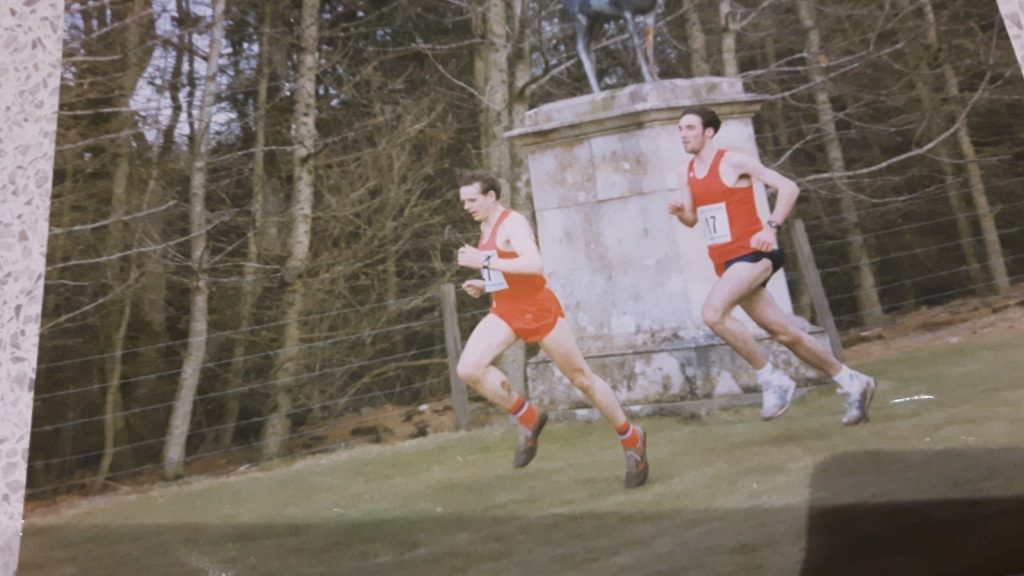 Peter leading Geoff Main (whom he eventually beat clearly) in the 1994 Castle Series race at Haddo House. Peter won the whole series that year.
Peter leading Geoff Main (whom he eventually beat clearly) in the 1994 Castle Series race at Haddo House. Peter won the whole series that year.
Peter Jennings and Jackie Stewart are exemplars of the Scottish club member at his very best. They started out as runners and went on to fill a multitude of roles in the sport, all of them to a very high level. Let’s look at them briefly before we hear about how well they dealt with them all.
- As runners: the quality of their athletics is set out below and this undoubtedly gave them an insight into the sport and a recognition of the needs of the athletes,
- As administrators: these are the people who organise meetings. Without them there would be no meetings – they sit on the committees that book the facilities, lay the trail, produce the programmes, take the entries, produce the results and do all that a good meeting requires. They have been administrators at club, district and national level.
- As officials: these are not to be confused with administrators although they often are. They are the timekeepers, the recorders, the stewards, the marshals, the starters and all the people on the course or down at trackside working with the athletes on race day. Again they have been active at club, district and national levels.
- As coaches.
Peter and Jackie have filled all of these roles and done so diligently and like the best of them, not just willingly but enthusiastically.
Fraser Clyne wrote:
It’s almost impossible to speak about Peter Jennings without mentioning his side-kick Jackie Stewart. They appear inseparable. Like Ant and Dec, Morcambe and Wise, Laurel and Hardy.
There’s hardly a race finish line in the north east where they haven’t been seen. Everything from small scale runs such as the Metro Proms 3k to major events including the Great Aberdeen Run, Baker Hughes 10k and the two-day Run Balmoral weekend. They have devoted countless hours to planning and marking out courses, compiling risk assessments, organising marshals, recording and collating results – not to mention the 101 other tasks which have to be carried out to allow an event to proceed smoothly. Thousands of North-East runners should be grateful for all they have done – and continue to do. Without their input, many races would never take place.
On top of that, they oversee twice weekly training sessions for Metro Aberdeen club members – and sometimes Junior training sessions as well. Peter and Jackie were founder members of the club, formed in late 1989/early 1990, and filled prominent positions on the committee for close to three decades. They have made a major contribution to the development of Metro which now has almost 400 members. Their most successful competitive spell, arguably, came when joining the Masters ranks, supporting the strong Metro squad in Cross Country and Road Running events.
Colin Youngson wrote:
Peter used to run for Aberdeen AAC, and I must have met him in the 1980s, but he joined Metro Aberdeen Running Club when it was formed in 1989, I joined in 1993 and we have been good friends ever since. Peter is enthusiastic, dedicated, friendly, very popular and has done a tremendous amount for North-East Running.
Jackie was another founder member of Metro. He was a tough man to beat in training and races, and direct and forceful in speech, but undoubtedly a cheerful, inspiring, determined guy, who also became a friend. Below, he writes about his running career, and all the good work he continues to do in the sport. He and Peter are Great Club Men indeed!
(Jackie was Metro Secretary for many years, while Peter was President. Jackie, a quietly modest character has, for years, put together twice-weekly training programmes for Metro members plus youth coaching for youngsters. Jackie, with Peter his right-hand man, has led the way with race organisation, dealing with entries and producing results. Fraser Clyne, Peter Jennings and Jackie Stewart make up the Management Team for Run Balmoral. Both Peter and Jackie have made a massive contribution to North-East running.)
Peter was always a decent club runner, but perhaps his best results were as a Veteran/Master. Between Season 1995-1996 and 2001-2, Peter won many Scottish Championship medals.
In the Scottish Masters Cross-Country Championship, Peter gained five successive team silvers (1996-99). His best individual place was 13th (1997); and in 2000 he was third team counter (23rd), two places in front of me. Our silver medal team-mates included: Keith Varney, Paul Graham, Fraser Clyne, Mark Johnston and Kevin Brooks.
In the Scottish Masters XC Relay, Peter was unlucky not to be in the 1997 winning Metro team (his great buddy and training partner Jackie Stewart was his replacement). However, in 1998 and 1999, Peter’s team won silver; and in 2000, Metro (and Peter) secured gold, along with Charlie Noble, Keith Varney and Bruce Moroney.
In the November 1996 East District XC Masters Championships, Peter finished fourth (second Metro man) and the team won gold. (Fraser Clyne, Peter Jennings, Jackie Stewart).
The two Amigos, Peter and Jackie, also featured in three successive team silver medal performances at the Scottish Veteran Harriers Club 6-Stage Road Relay (1997-99).
As a Senior, Peter Jennings ran for Metro in the prestigious 8-Man Edinburgh to Glasgow Road Relay in 1995 (running Stage 1); and in 1998 (Stage 7, with his team finishing 11th from the invited 22).
Apart from Championships, Peter ran so many races, at distances from 5k to marathon, but he can list some of his favourites.
Peter Jennings wrote:
In 1955, I was born in Aberdeen but live in Westhill now. Started running aged 30. My personal best times are: 5k 15 30; 10k 32 40; Half Marathon 1.12.40; Marathon 2.45 28.
In the 1997 Masters Cross-Country Relays, I had to give up my place to Jackie as I had broken my arm at the Bennachie Hill Race.
One of my favourite races was the Bennachie hill race. I ran the very first one in 1990 where I finished in 6th place. I ran it the following year where I finished 2nd to one of the best hill runners in the country (Scottish International Graeme Bartlett). I ran every year up until about 5 years ago, But I go there every year to check the course for the organiser, then I do the timing.
I have 4 Scottish Masters silver medals for the Marathon distance: Elgin 1997 (behind Fraser Clyne, race winner); Inverclyde 1998; Elgin 2000 (behind my friendly rival Jackie Stewart); perhaps the fourth one was at Lochaber.
Two other results that pleased me were: 1997 Edinburgh to North Berwick 22 miles (1st Vet 2.22); and 1999 Highland Cross 3 48 (1st Vet).
My best performances were in Cross Country and Hill Running. One of my best results was winning the Castle Series in 1994 where I finished in front of a few runners that I could not get near to on the roads.
I was on the Metro Committee from day one for 27 years, most of the time as Chairman.
I was on the NESAP (North East of Scotland Athletics Partnership) Committee for over 25 years. I ended the group this year and donated the remaining funds (£3750) to the DEC Ukraine fund.
The first race I organised was the Dyce Half in 1991 (which I took over as Alan Fulton was looking for someone to take it on so, rather than lose the event, I said I would take it on. I was still the organiser up until a couple of years ago. I am still involved through the club.
Since then, I have been involved in organising hundreds of races. Jackie Stewart and myself are involved in almost every event in the area.
We have organised two Scottish Masters Cross-Country Championships, two East District Cross-Country Championships and have been involved in many more events.
We were on the organising committee for the very popular Aberdeen Baker Hughes 10k for many years.
We are the Race Directors for RunBalmoral, which is a festival of running in the Balmoral Estate attracting almost 6000 runners over a weekend in April.
I am a level 3 UK Athletic Coach and have been coaching for almost 30 years.
I am now a qualified UK Athletics Official. I was the Race Convener at this year’s Scottish Masters Cross-Country Championship. I have also been involved in the Scottish National Cross-Country Championship at Falkirk and the National CC Relays at Livingston.
Some time ago, Jackie and I were nominated as Volunteers of the Year and were invited to a Scottish Athletics event in Glasgow, where we met Laura Muir and Steve Cram – and finished runners-up.
As Fraser and Colin have said above and Alex Jackson has also said, Jackie Stewart and Peter Jennings are very much a double act, and it would not have been right to write about one but not the other. So having given Peter the opportunity to comment, we should certainly do the same for Jackie.
Jackie Stewart racing the 1997 London Marathon, where he ran his personal best time
Jackie Stewart wrote:
I was born September 1952 in Aberdeen. I stay in Westhill and have done so for 44 years. I started running in 1986 aged 34 after I retired from playing Amateur Football.
Personal Bests: 50K 3:26:40, Marathon 2:40:35, Half Marathon 1:14:00, 10K 33:45
In 1992, 93, and 94, after turning vet, I participated in the Castle Series, of 3 races. In those years I won 9 out of 9 races claiming 3 overall veteran titles.
1998 Silver Medal British Vets Marathon O/45 at Lochaber.
1999 Silver Medal Scottish 50K Championships.
2001 Silver Vets Medal Scottish Championship, Elgin.
Coming in 1st Scottish Premier Club, representing Aberdeen FC, in the 2001 London Marathon Football challenge.
In 2001 I developed Atrial Fibrillation, which has dogged me ever since and really put paid to my racing days. My heart has been permanently out of rhythm for 19 years. It has also curtailed my own running, so just I jog to keep fit.
I must admit I have had a few highs: Winning the Castles in my first race as a Vet; getting my pb at London Marathon 1997; securing a silver medal in the Scottish 50K Championships, when I unlapped myself from Alan Reid, and got a backhanded compliment from him, when he said he
knew that if he hung onto me, he would win the race.
As a Coach, I am proud to say I started the Junior Section for Metro Aberdeen. There were only a few at the time; and some of the women weren’t coming to training. I asked why and they said they had the kids to look after. I told them to bring the kids down too and, as long as they were willing to work, I would coach them. The rest is history – we now have around 50 Juniors.
I also coach the Seniors on a Tuesday and Thursday and have done for around 25 years. There are many runners in the club who have gained PBs from the training.
I have also coached one to one and a couple of my female runners went on to gain Scotland and District vests.
Regarding organising races, it takes up a lot of time. I liked to pride myself in getting the results of races which Peter and I organised out on the same day. Peter and I have helped organise many races in the North East. We have a good reputation with Scottish Athletics; and the Local authorities know that, when we are involved, it is in safe hands. We take pride in covering all areas of a race.
I am also a Level Two Endurance Official, which is very satisfying, seeing how others work at races. I have been mentored by SAL officials to try and gain my level three and really enjoy meeting the other officials and meeting and greeting the runners as they finish. You get satisfaction in being there to help other people who ask us questions and are able to answer them. I cannot compete now, so being an official is as close to the National races that I will get.
Left to right: Jackie and Peter at the Scottish Athletics Presentation evening
Ian McKenzie as Team Manager: an Evaluation
Many good officials and administrators achieve less because they try to do more – eg any job that needs doing, they take it on and there are people in many clubs who run for the club, work on the committee, represent the club on a higher board and maybe do some coaching too. Ian was not ambitious in that way – he wanted to serve his club and that was enough. The concentration of effort honed his organisational talents. How did he go about the job? He says –
What can we see from the above? A willingness to take and maybe even welcome personal responsibility for decisions that would affect athletes and club alike. Early knowledge of the athletes commitments. He had a clear system of informing the athletes of what he was doing and reasons for selection and the system was known and understood by the men concerned. I would suggest that his own running career and interaction with athletes before and after races would have given him a background that made the communication more informed.
How did others find him to work with? We already have Colin Youngson’s thoughts, there are some more below.
***
Alistair Blamire’s brief comment sums up a lot of the others when he says “a great club man, really friendly guy”. Just read these compliments.
and this was elaborated and added to by journalist Doug Gillon.
Ian was secretary when ESH won their first British League victory at Meadowbank in 1970 which is probably when I had the first of many dealings with him as a journalist. He was cross-country team manager for a long time – can’t be specific with dates, but that was the role in which I saw him most. I seemed to be constantly in touch with him to preview events and get results both when working at the Sunday Post and at The Glasgow Herald from ’77 onwards. As you know, the 1970’s were halcyon days for their E-G team and for their cross-country squad in the national, not to mention spectacular track success.
Ian was always helpful, efficient, and courteous – and related well to the athletes. He was never a blazer man which I am sure contributed to ESH being able to field consistently strong track and field league teams. And he got the relationship between athletics and the media at a time when minority sport was fighting for column inches. He seemed to realise the need for an “angle” and always seemed willing to help find it. I appreciated that. He seemed as passionate about his sport as I was.
It obviously helped that I was an Edinburgh guy and knew athletes and officials in his club. However, he never let the fact that I was an EAC man get in the way!”
Ian has already paid tribute to Jim Smart as Track Team Manager and the fact that T&F success was a team effort yet, when Doug’s comments above were subsequently discussed, Doug added the following –
“It occurs to me that despite the contributions of such as Jim Smart, Hamish Robertson, Oliver Dickson, Ian Clifton, and Bob Steel, Ian McKenzie might well deserve the accolade of the man most responsible for driving the club’s success in the golden era of the 1970s – no mean epitaph.”
“I joined Edinburgh Southern Harriers in 1981. At that time Ian was cross country team manager; I think his last year. After my first XC race at Hawick, after coming close to last, Ian told me ” The first one is always the worst” . Ian was heavily involved in helping organising the club’s contributions to the early Edinburgh Marathons and later the half marathons and Princes Street Mile Races. I was roped into stuffing envelopes at Meadowbank, putting up signs on lampposts and marshalling.
I didn’t see much of him until I took over from Evan Cameron as Road Race Manger on the ESH Committee in 1985. Ian was Secretary by then. The thing that struck me about Ian was the amount of work he was willing to take on on behalf of the club.
Ian was instrumental, with myself and George Brown in setting up a Road Racing Section at Meggetland, to cash into the road running boom, and to try to boost the fields at XC. We had about 30-40 turn up initially, which settled down to about 20 regulars. Those who stuck out the manic fartlek session devised by Ian, got very good indeed. Ian himself turned up at a lot of the sessions to give encouragement and enjoy a beer afterwards.
Ian also acted as treasurer for a while. The club’s finances were pretty dire, British League and the years we did the GRE cup were a heavy drain, Ian was always looking for ways to obtain sponsorship and bringing in cash. One of the more bizarre ones, was a pizza-box relay, between the Pizzaland outlets in Edinburgh for publicity. I think it brought in about £500.
Ian also used his organisational skills to set up the Scottish Gas 10k, using his workplace at Granton as the focus. It ran for many years and again brought in much needed cash.”
